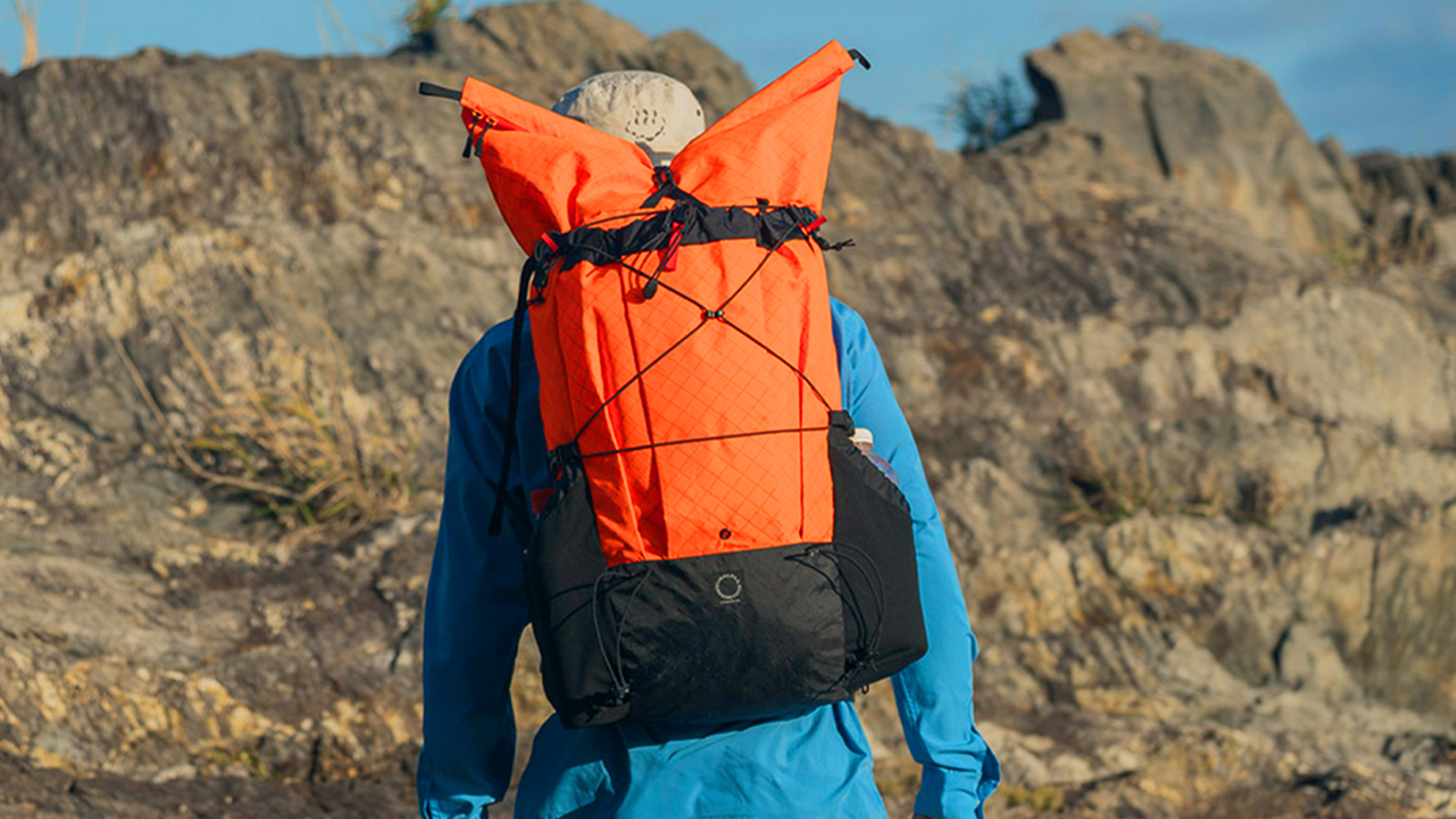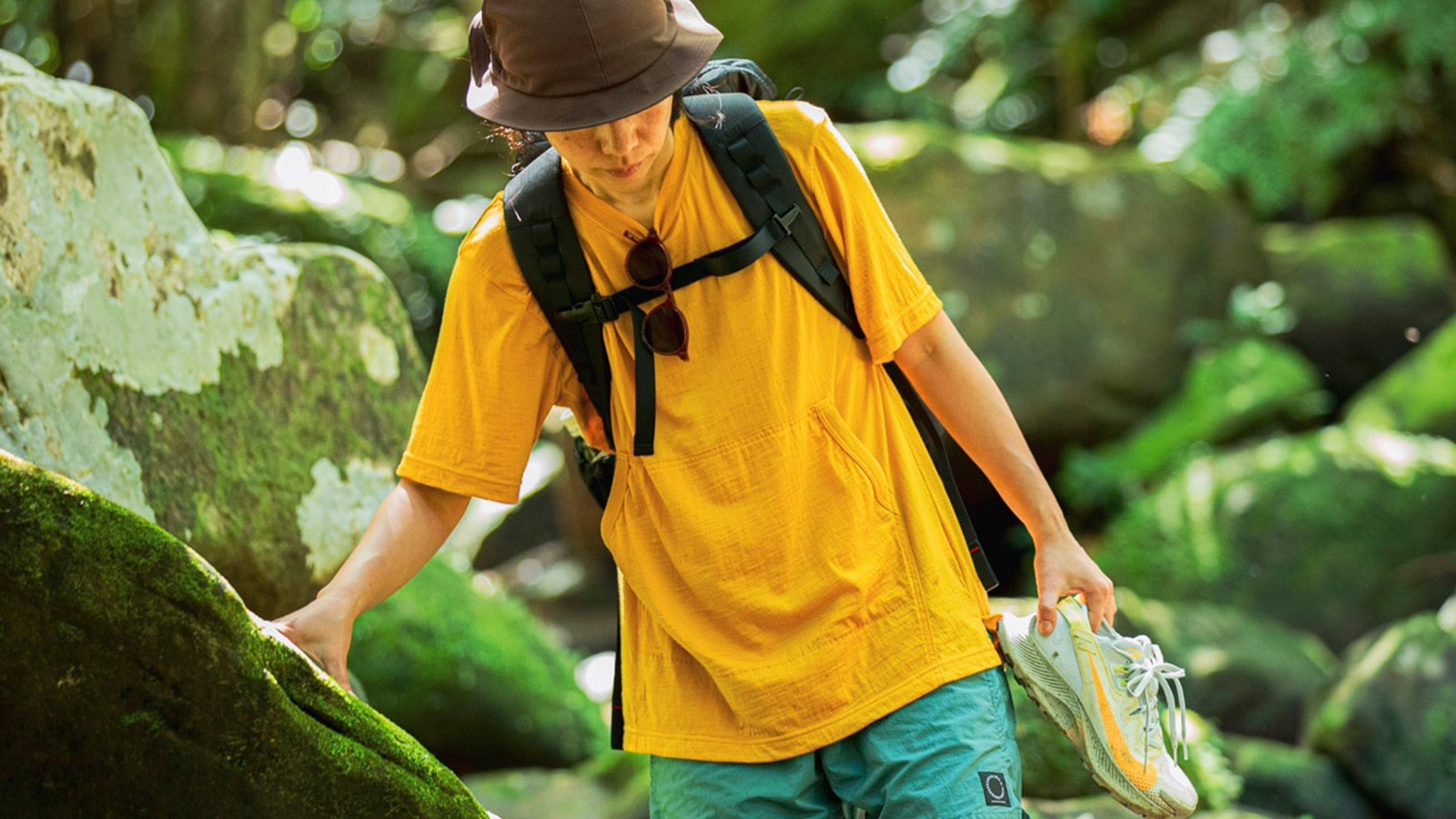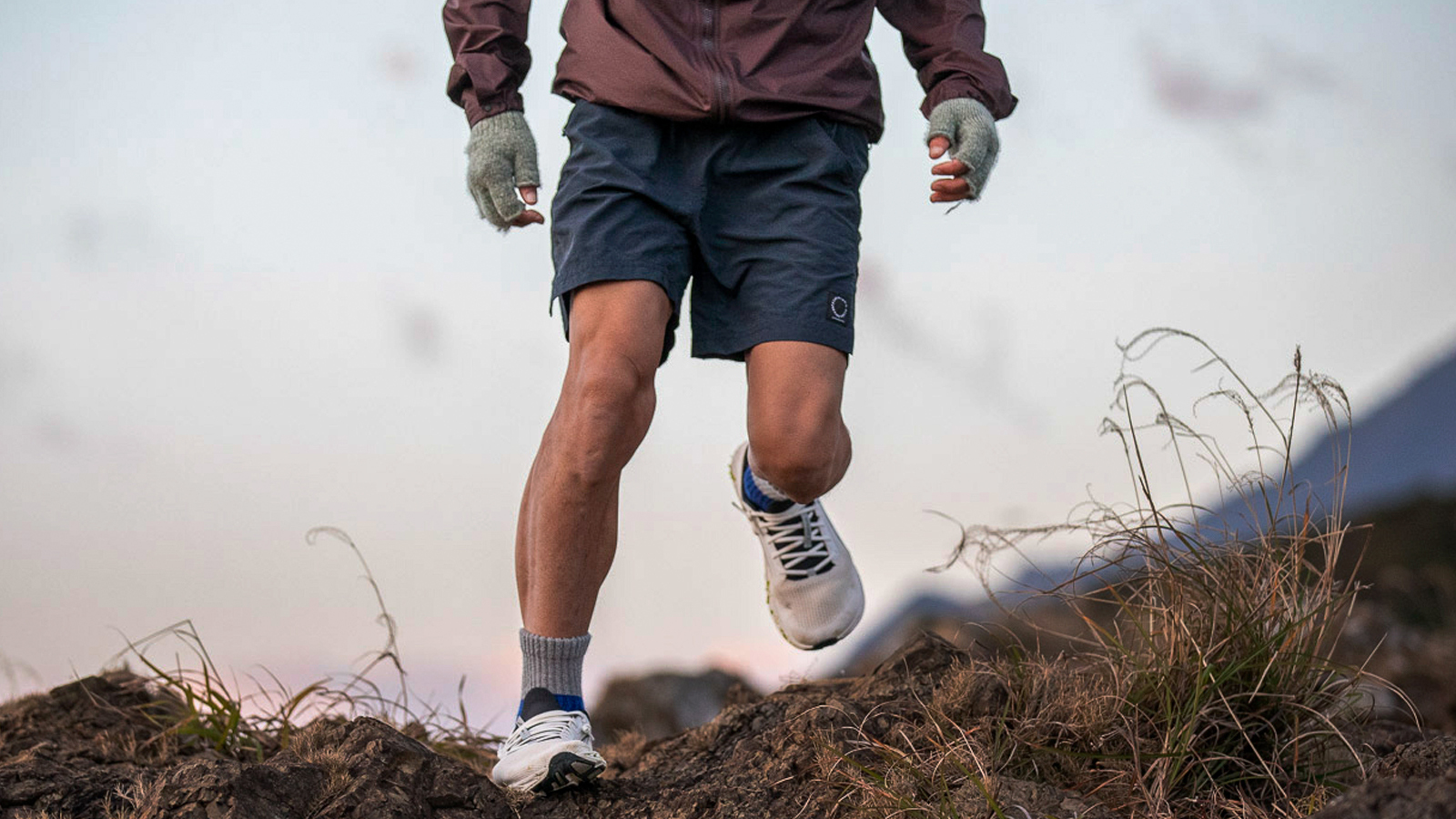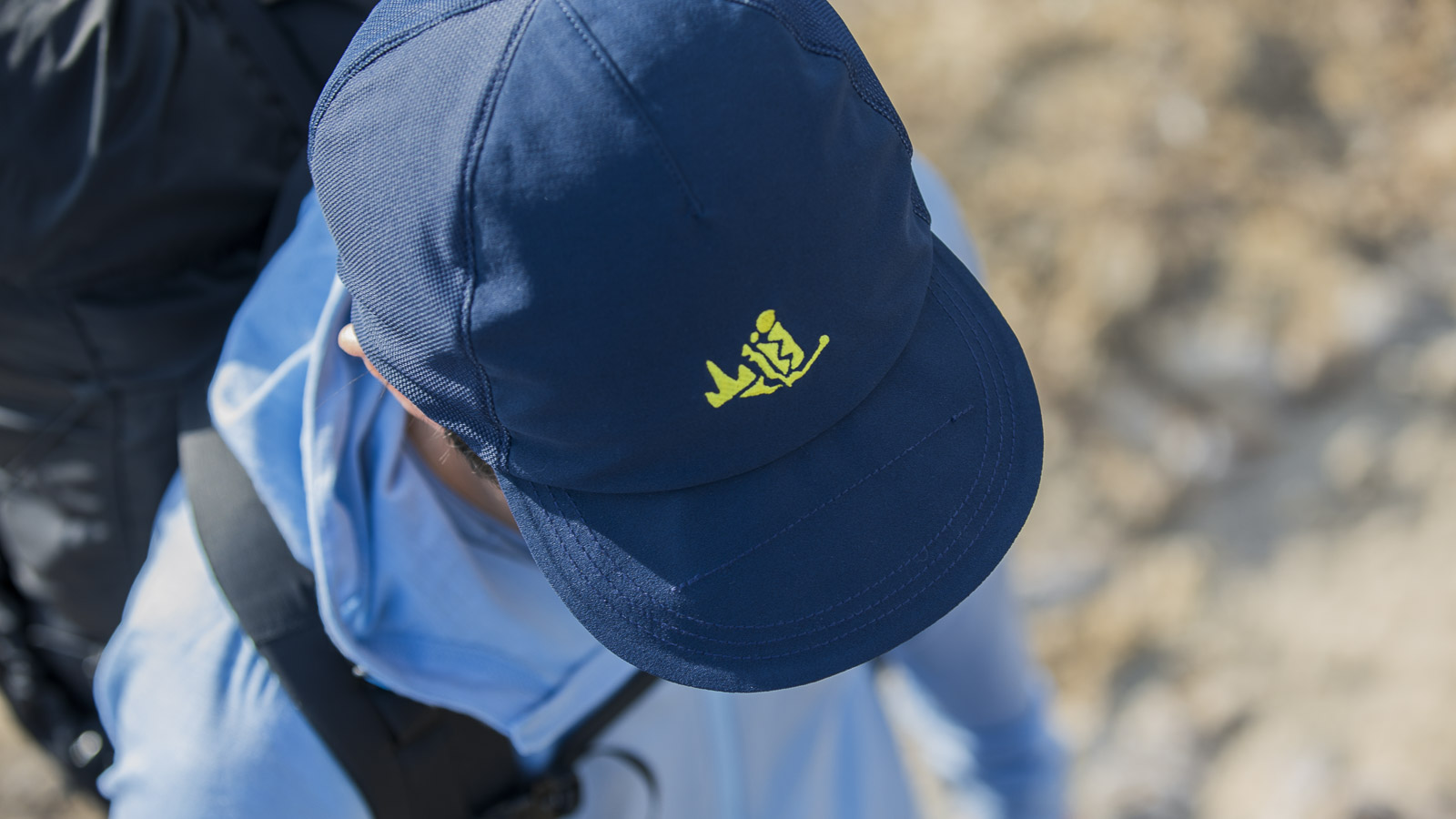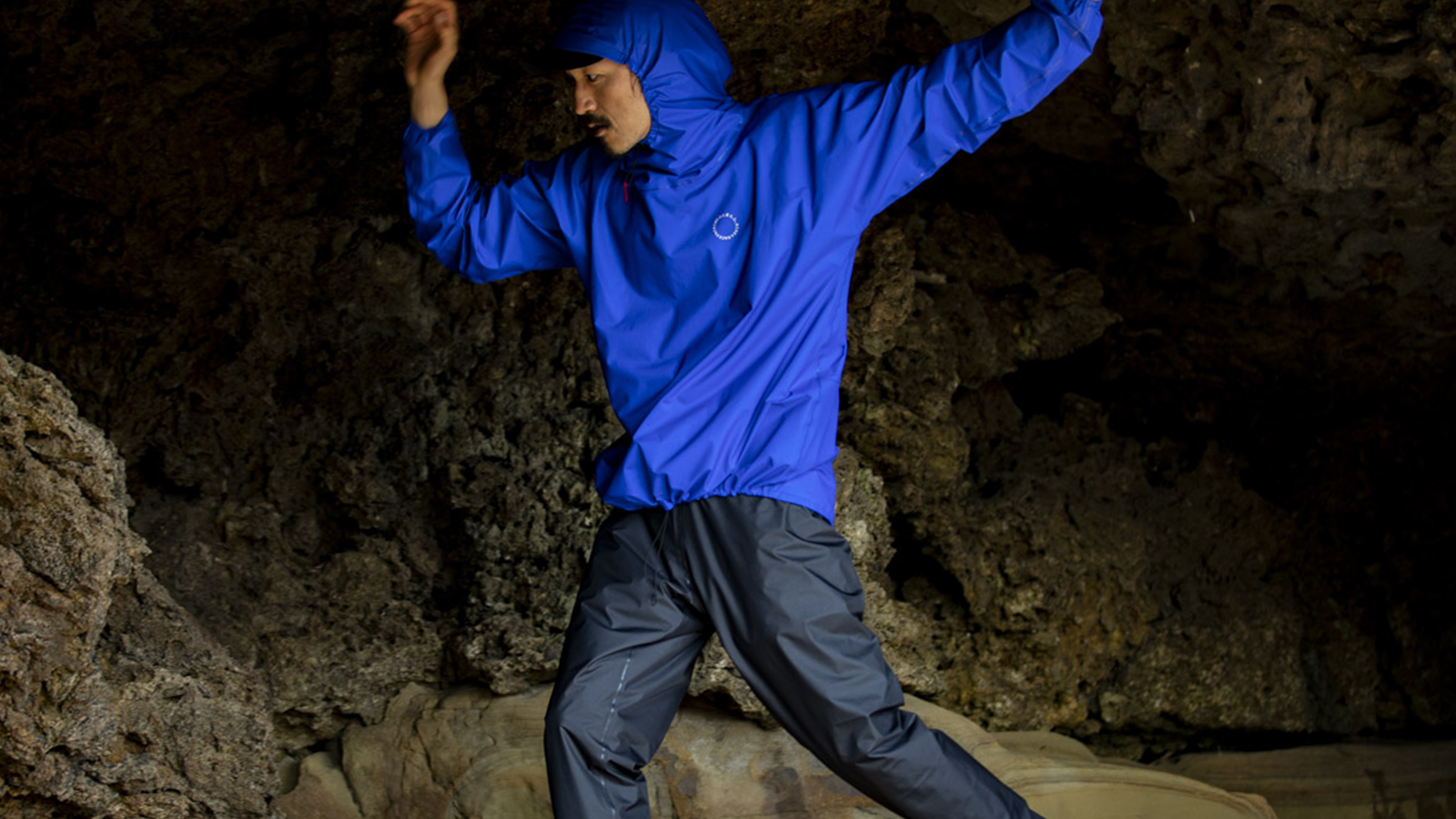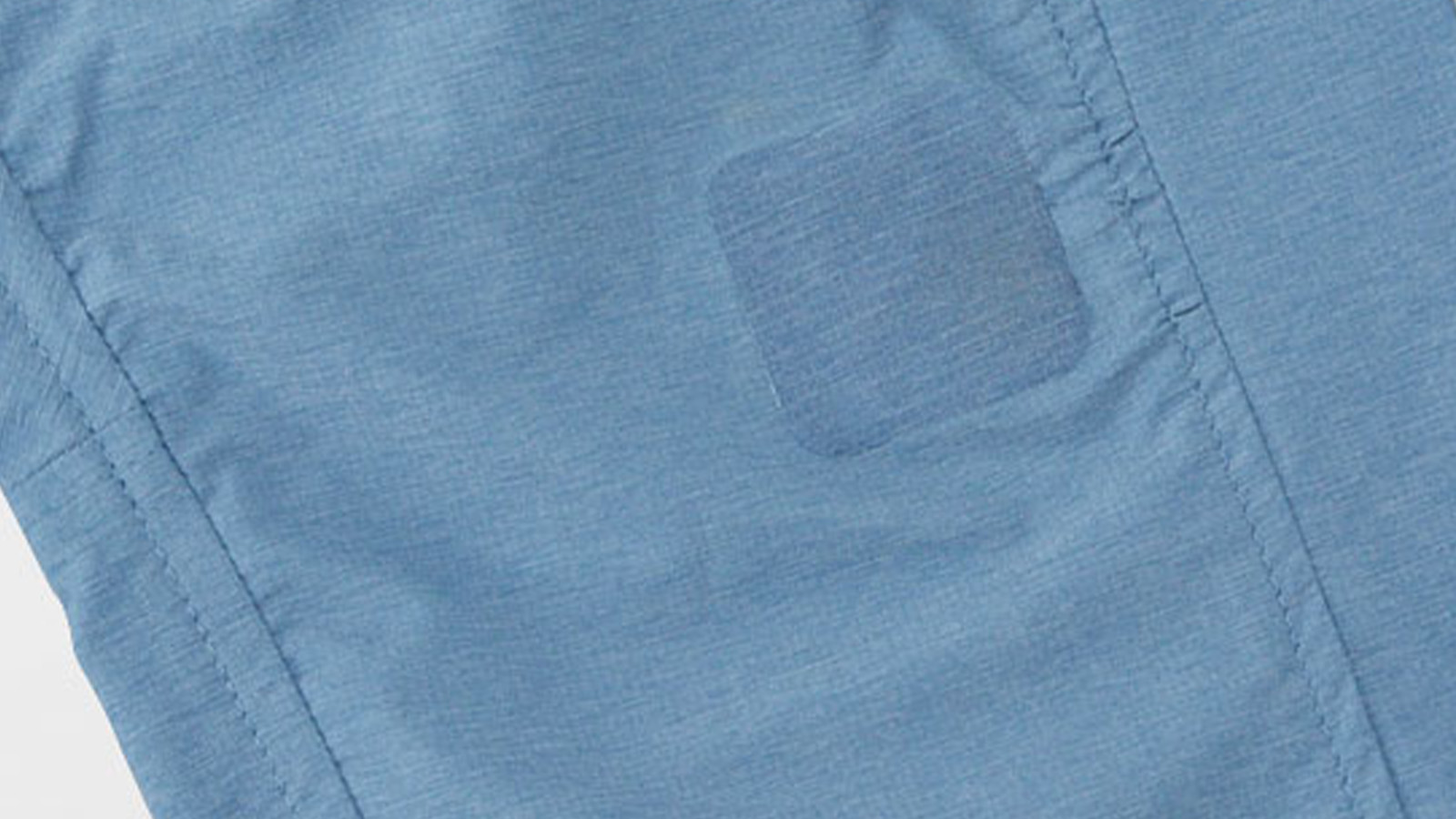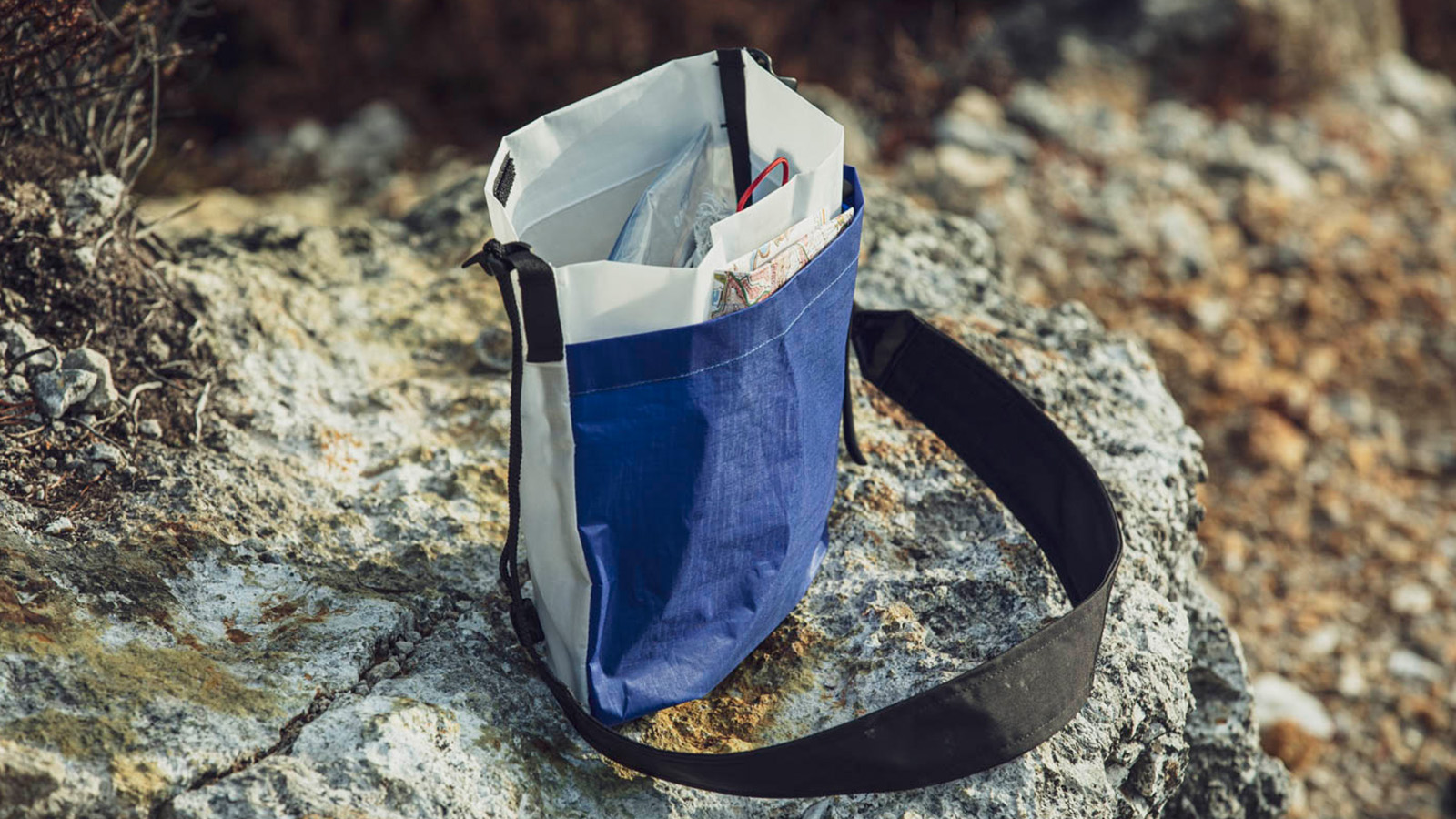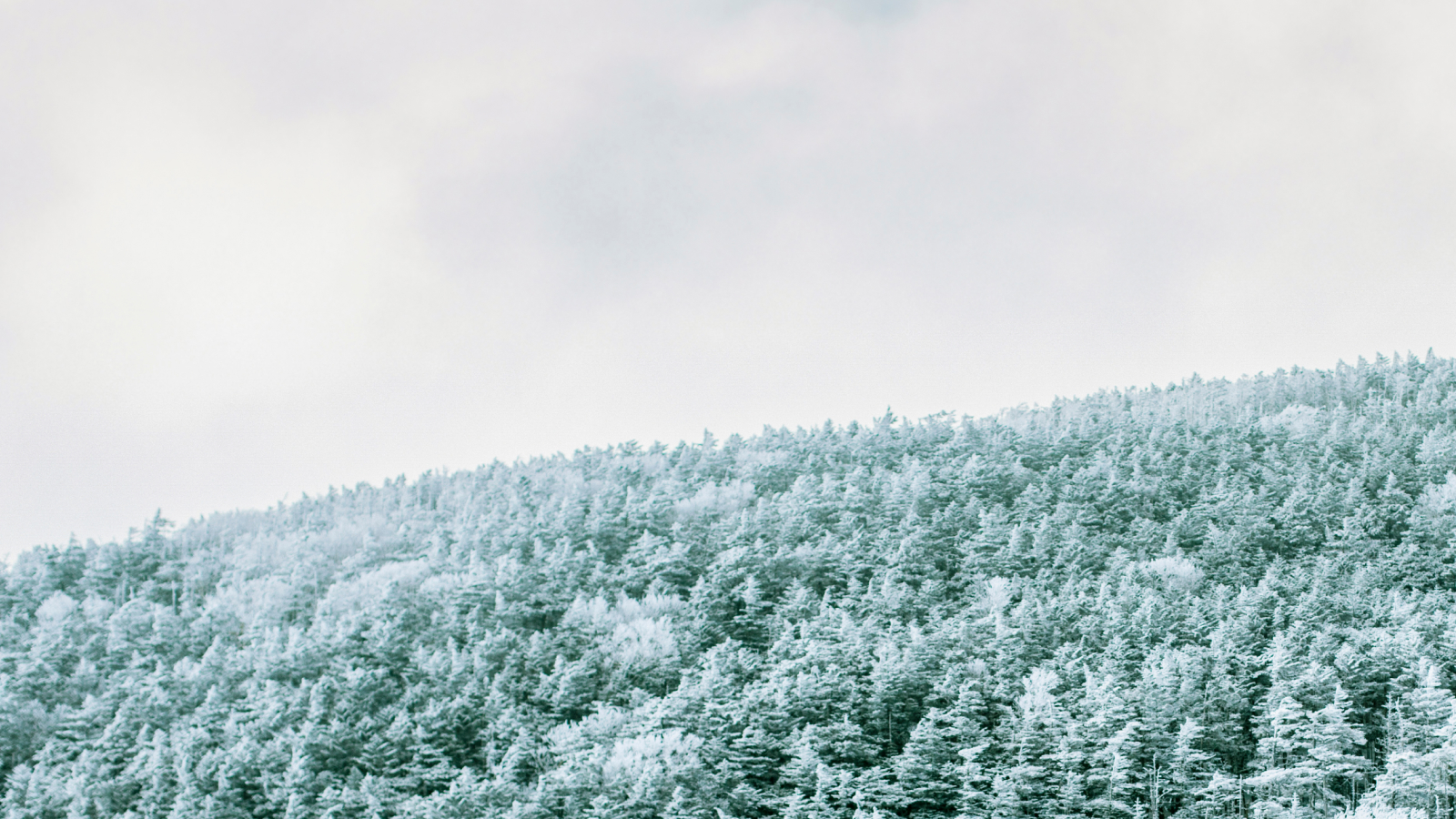#1 Oji’s Yamatomichi Trail Log
#1 Oji’s Yamatomichi Trail Log
At Yamatomichi, hiking isn’t just encouraged—it’s part of the job. Our staff are expected to hit the trails regularly, and for many of us, it’s a dream come true.
In this edition, we follow Sonoda—known to the team as Ōji—a staff member at Yamatomichi Kamakura. Over several installments, Ōji will share his journey as part of our UL Hiking Research Program, through which he attempted a 600km self-supported traverse across Iceland.
Iceland—a remote island nation far from Japan, and a long-held dream for Ōji—served as the backdrop for this ambitious adventure. His route spanned from the northernmost lighthouse to the southernmost tip, carrying 20 days' worth of food with no resupply.
In Part 1, we follow his journey from departure in Japan to reaching the trailhead in Iceland. With a pack full of supplies and anticipation, the adventure begins.
Prologue
“Alright, let’s do this.”
Muttering those words to myself, I stood at the northernmost lighthouse of Iceland, Hraunhafnartangi. My backpack was stuffed to the brim with 20 days’ worth of food, weighing heavily on my shoulders. I had trained for this moment—or so I thought—but standing at the start of this 600km, unsupported journey across Iceland, I couldn’t help but feel a flicker of anxiety.
Still, I shook it off with a quick, “It always works out”, and set off toward my goal: Dyrhólaey, the southernmost lighthouse on the island. Just like that, the adventure had officially begun.
…But before diving in, let me share a bit about how I ended up here—and why I chose Iceland for this journey.
Why Iceland?
Iceland is a remote island nation in the North Atlantic, just above Europe. It’s about the combined size of Hokkaido and Shikoku, but with a population of only around 400,000—roughly the same as New Orleans in the US or Málaga in Spain.
Towns are scattered along Route 1, known as the Ring Road, which circles the island for about 1,300km. Outside of that, the country is almost entirely wilderness—a place of raw, untouched beauty.
When I visited in July, Iceland was in the midst of summer, though temperatures hovered around 10°C (50°F). There are barely any *trees, so the wind is constant, but the weather was surprisingly comfortable. Most striking was the midnight sun—even in the middle of the night, the sky never went fully dark. It was a surreal experience unlike anything you can have in Japan.
*Iceland did once have forests, but around 1,100 years ago, Viking settlers cut down much of the native woodland for building and fuel. Since then, changing climate conditions and extensive sheep grazing have made reforestation difficult.
I chose Iceland because it had always been a country I dreamed of visiting at least once. I’d heard it has an animistic culture similar to Japan’s—many Icelanders still believe in the existence of elves and hidden beings, which I found fascinating.
The more I researched, the more I became captivated—especially by plate tectonics. Iceland sits on the boundary between the North American and Eurasian plates, where the crust is rising, while in Japan, those same plates are subducting. It felt like Iceland and Japan were geologic opposites—yet deeply connected. That sense of kinship drew me in even more.
A few years back, I came across a website by hiker Jonathan Ley, who wrote a detailed trip report of his 2006 Iceland thru-hike. I read it countless times, imagining myself walking the same path. Then came an opportunity: Yamatomichi’s UL Hiking Research Program was launched—a chance for staff to take on personal hiking missions.
I knew exactly what I wanted to do. I wrote up a proposal titled:
“To the Edge of the Midnight Sun – 600km Across Iceland with No Resupply”
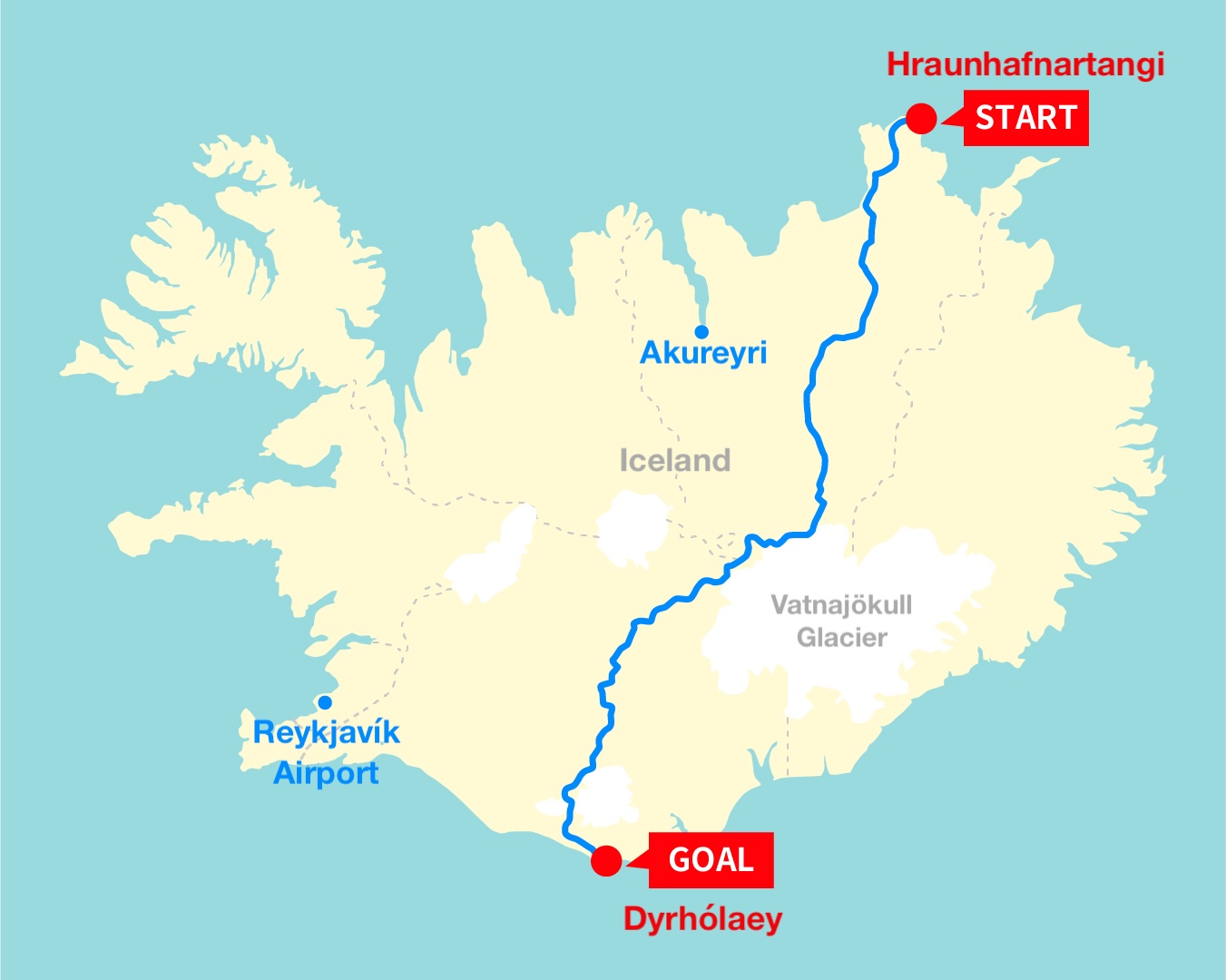
The plan
My route would span the full length of Iceland, north to south. The first and last 100km of the route would pass near towns where resupply was possible, but the central highlands—are uninhabitable and completely wild. No stores. No help.
So I thought, why not go all in?
I decided to take on the challenge of walking 600km over 20 days without resupply.
Besides, Iceland is famously expensive—about five times the cost of Japan—so the idea of minimizing in-country food expenses definitely added extra motivation. With my pack loaded and my spirit high, I set out on this ambitious journey.
I had never hiked a long-distance trail overseas before, nor had I ever carried 20 days’ worth of food while trekking and camping along the way. This was uncharted territory for me—by far the biggest challenge of my life.
And so, that’s how I found myself walking across Iceland.
July 9 – Saying goodbye to my beloved wife
The night before I left, Akira—the founder of Yamatomichi—his family, the Kamakura team, and my wife Mina-chan held a send-off party for me. Maybe it was because I was heading to such a wild and unknown place like Iceland, but the whole event had the feeling of a farewell for good, rather than a simple send-off. Still, I felt deeply supported and encouraged by everyone there.
I chose Finnair, the shortest route to Iceland, with a night flight departing from Haneda Airport. There are no direct flights from Japan to Iceland, so I had to transfer in Helsinki with a layover of about three hours—a total of roughly 19 hours in transit. It had been years since my last trip overseas, and I felt a bit nervous about leaving Japan again.
Right up until the last possible moment, I was fussing over my gear—packing, unpacking, repacking—talking to myself the whole time. Finally, I was ready. Mina-chan drove me to the airport, and we spent some time together inside before my flight. We went to a café, and while I don’t remember exactly what we talked about, I’m sure it was a mix of silly banter, serious conversation, and maybe some “just in case” talk too.
Before long, it was nearly time to board.
“Wait—I forgot my watch!”
I blurted it out, panicked. Mina-chan looked at me, half-exasperated, but quickly shifted to calm determination.
“Seriously? There was a Bic Camera nearby earlier—let’s go get one.”
Just like always, she gently but firmly guided me back on track, without making a big deal of it. She knows me well—forgetting things before a trip is just part of who I am. And she also knows that I’ll probably never change.
We found the cheapest, simplest Casio watch—lightweight, minimal. I bought it and made my way to the gate.
We didn’t say it out loud, but maybe we were both thinking it: This might be the last time we see each other.
At the gate, we shared a long hug. Then, smiling, we waved goodbye.
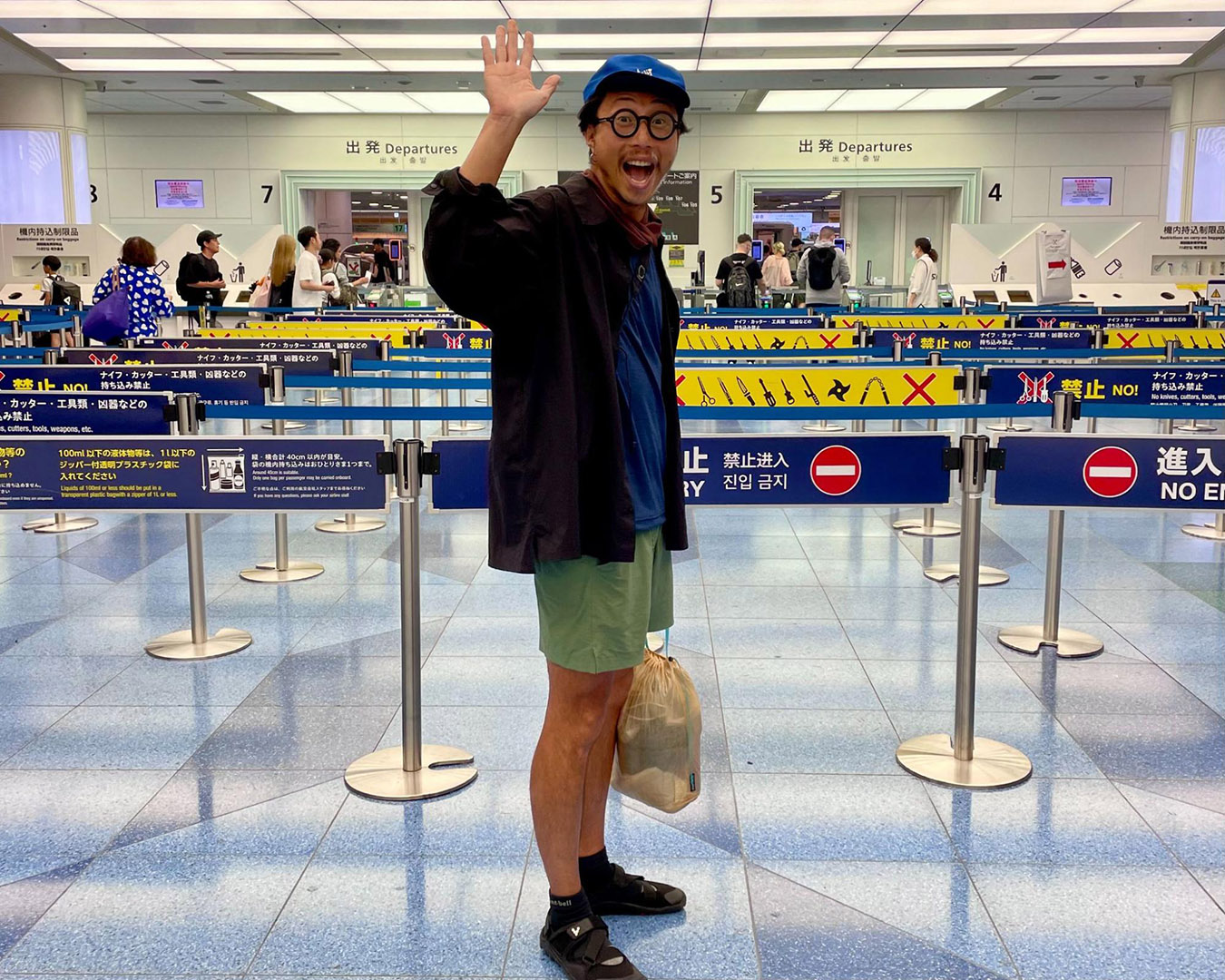
July 10 – Setting foot in Iceland
At 8:00 AM, right on schedule, I landed at Keflavík International Airport in Iceland. The place was buzzing with people—some just arriving, others getting ready to depart—and the hectic atmosphere almost swept me up. I figured I should take a moment to ground myself, so I stopped by a shop to grab a beer (yes, in the morning—don’t judge!).
I spotted a can with “Gull” written on it, which looked like beer, and grabbed it without hesitation. I also ordered a hot dog from the counter next to the register. When the guy working there asked me, “How do you want it?” I froze a little—not knowing the routine, I didn’t quite understand what he was expecting. After a brief, awkward silence, the only thing that came out of my mouth was:
“All okay!”
He smiled and replied, “OK!” then proceeded to load it up with every topping and two types of sauces. A true “everything on it” hot dog! I’d never tasted anything quite like it in Japan, but to my surprise, I really liked it. I washed it down with the beer, thinking I wouldn’t mind having another one sometime.
(It was also then that I learned something important: regular grocery stores in Iceland can only sell light beer with an alcohol content of 2.25%. Anything stronger has to be purchased from licensed liquor stores.)
Though I felt lightheaded and slightly disoriented being in a foreign country, just taking this small action—ordering a beer and a hot dog—somehow made me feel connected to the place. Like I had finally landed not just physically, but mentally, in Iceland.

To reach Hraunhafnartangi, the northernmost lighthouse in Iceland and the official starting point of my journey, my goal for the day was to get to a town in the north called Húsavík. First, I needed to take a bus from Keflavík International Airport to Reykjavík Airport, which took about an hour. From there, I’d catch a domestic flight to a town called Akureyri.
Looking out the bus window on the way to Reykjavík Airport, I saw a road construction site where a section of the national highway had been closed due to a volcanic eruption. The scene looked serious at first, but a detour had already been built, and cars were passing through without issue. Maybe some time had passed since the eruption, but it didn’t seem like a major disruption. I found myself thinking, I guess volcanic eruptions are just part of everyday life here.
When I arrived at Reykjavík Airport, I was surprised at how small it was—maybe the smallest airport I’ve ever been to. It only handles domestic flights on small aircraft, and compared to the shiny, modern, mall-like airports I’ve grown used to, this one felt like something left behind in the 1980s.
But honestly, I liked it. Rather than being dazzled by glass and lights, I felt much more at ease in this kind of humble, no-frills space.
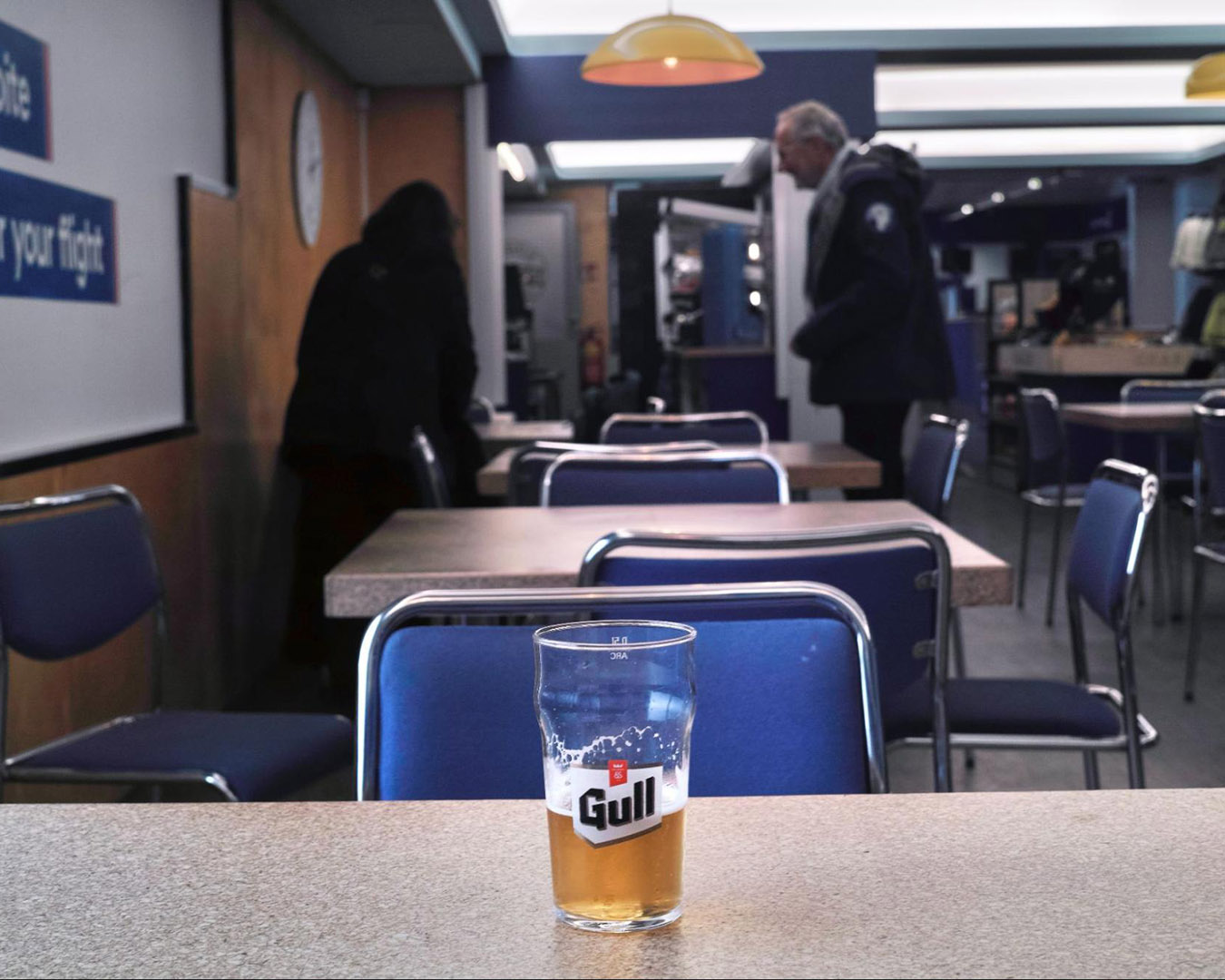
With some time to spare before my flight, I grabbed another Gull, the local light beer, from the airport shop and sat in the small eat-in area to kill some time. A few others were there too: a man endlessly talking on his phone, an elderly couple, and a young woman—probably Middle Eastern—with a striking, distinctive look.
Behind the counter was a woman who looked to be in her 50s, broad-shouldered with a rocker lover vibe—possibly a fan of heavy metal. When things were slow, she would slip out the back door for a smoke. The whole scene felt like something straight out of a Wes Anderson film.
Eventually, the flight board changed to “Now Boarding”, and I lined up to board the small aircraft. There were no flight attendants—just the co-pilot, who also acted as cabin crew. He handled everything: the safety briefing, passing out snacks and water, and all in-flight service. I was genuinely surprised.
As we took off, the sky outside was rainy and the visibility poor. But the further we flew north, the more the skies began to clear. Then, for the first time since arriving, I caught a glimpse of the awe-inspiring natural landscape Iceland is known for. Vast, unfamiliar terrain stretched out below—unlike anything I had seen before.
“I’m really going to walk through this?”
The thought sent a rush of excitement—and nerves—through me, my heart beating faster with anticipation.
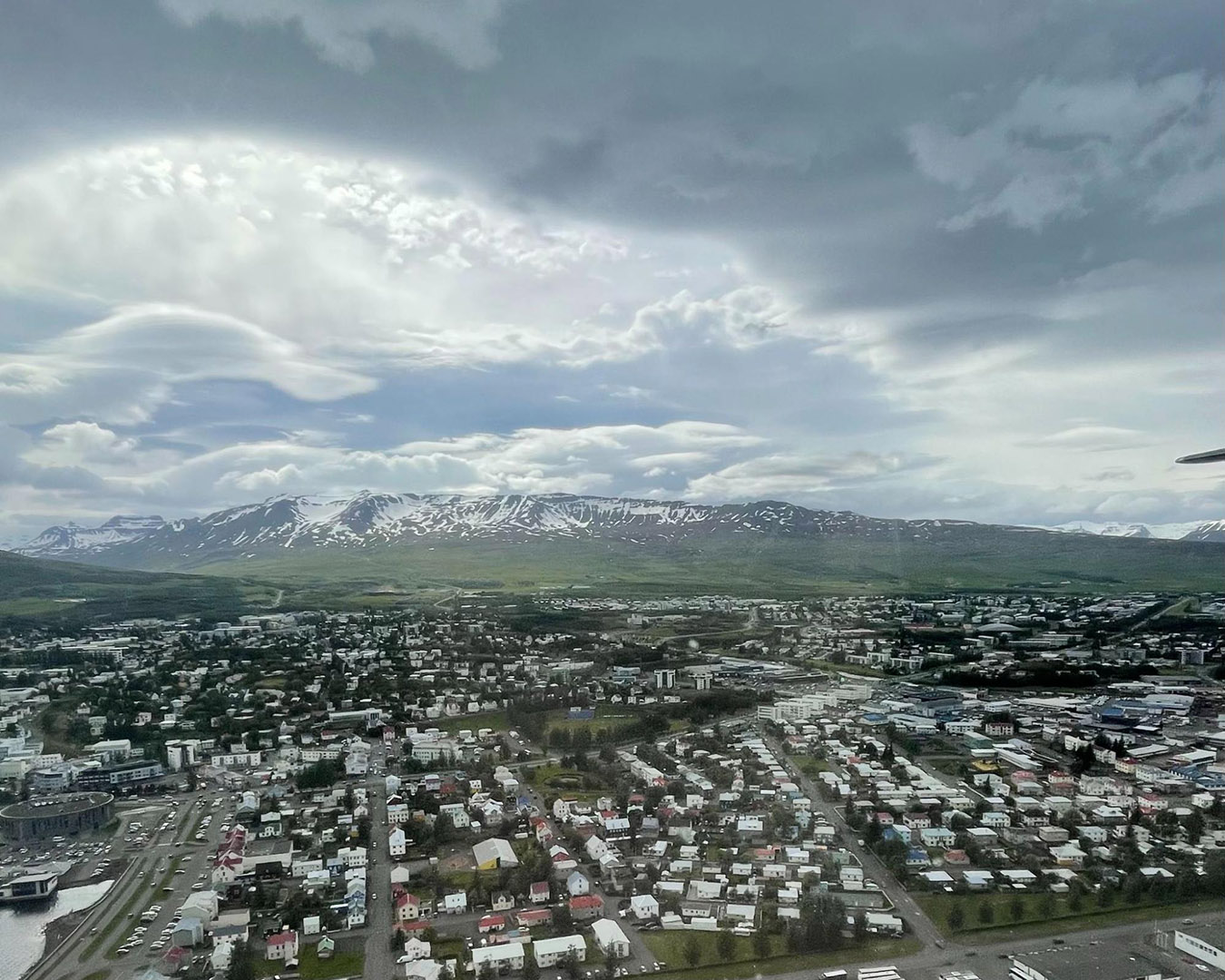
The town of akureyri as seen from the plane
After about an hour in the air, I arrived at Akureyri Airport. It was a bit nicer than Reykjavík Airport but just as small. From here, I still had about 100 kilometers to reach Húsavík, my destination for the day. I needed to take a series of buses—and first, I had to walk a few kilometers just to get to the bus stop.
As soon as I shouldered my backpack, I felt the weight. Heavy.
But I imagined myself a week from now, smiling at how much lighter it would feel, and that thought actually made me happy. I figured I might as well embrace the weight for now and enjoy the beginning of the journey.
After walking for about an hour, I arrived near where the bus stop was supposed to be. My shoulders ached under the load. I still had time before the bus was scheduled to arrive, but since I wasn’t exactly sure where it would stop, I decided to scout the area.
There wasn’t anything that looked like a bus stop. At the pin on Google Maps, I found nothing more than a bench—that had to be it. Feeling a little more certain, I moved over to a nearby spot with an ashtray, lit a cigarette, and waited.
Not long after, a large van pulled up with just the driver inside. A teenage boy who’d been sitting on the bench next to me got in. I asked the driver where he was headed—just to be safe—but it wasn’t the right bus. Probably a school shuttle.
A little while later, another similar van arrived. I asked the driver where it was going.
“Húsavík!” he said.
This was it! I climbed in. I was the only passenger. I started to head for the back seat, but the driver called out:
“Sit up front!”
So I took the seat right behind the driver—who was, of course, on the left side, as cars in Iceland are left-hand drive.
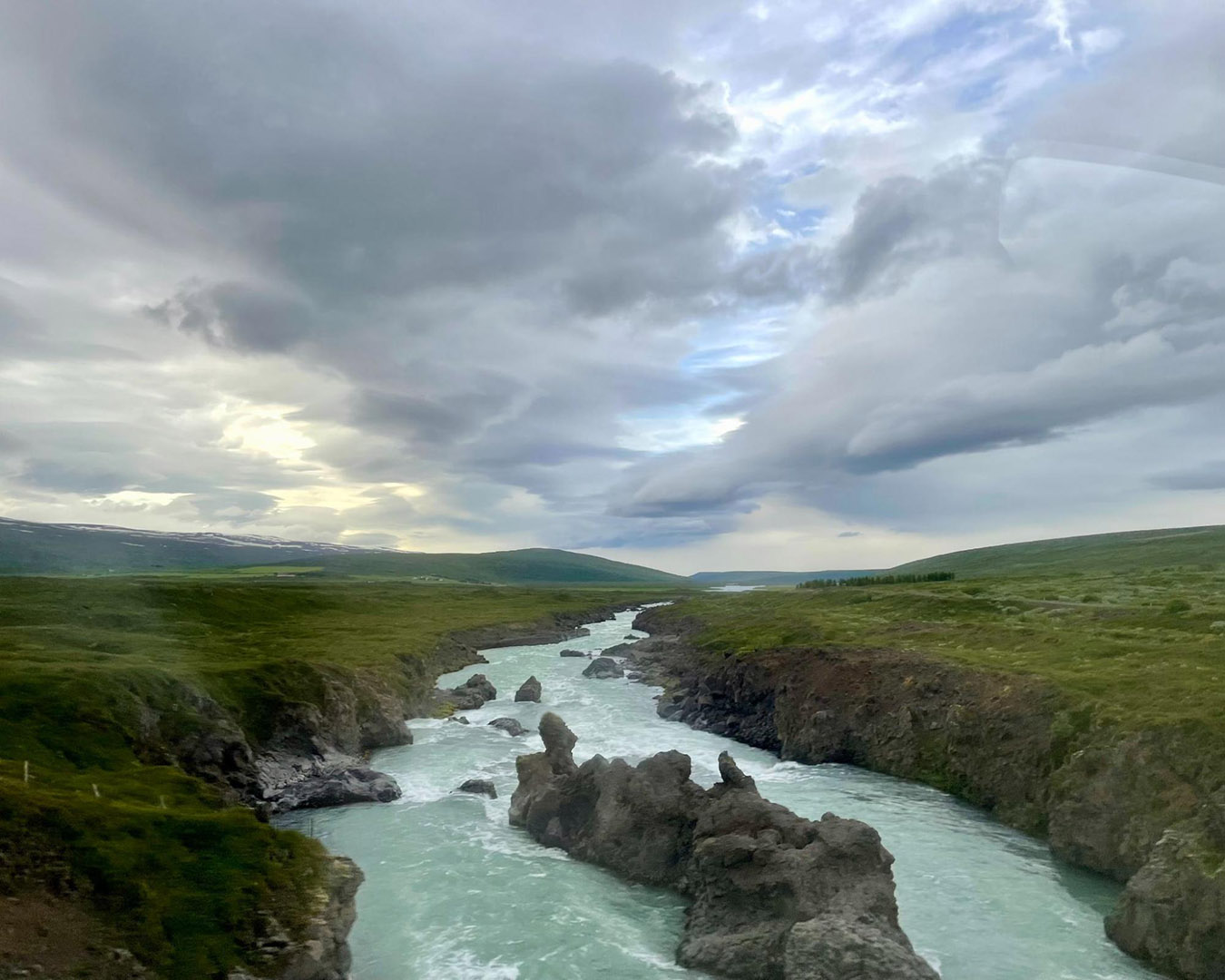
Vast Icelandic landscape from the bus window.
The driver was watching a World Cup match from the France tournament on the car’s navigation screen while driving. He turned to me and asked,
“Do you like football?”
“Yeah, I do. I played up until middle school,” I replied.
“I used to be a professional player. I was on the Romanian national team.”
“Seriously? That’s amazing! The only Romanian player I really know is Mutu.”
“Mutu? He’s my junior.”
And just like that, we dove into a lively conversation about football.
He kept the questions coming rapid-fire:
“Where are you from?”
“I’ve been to Osaka.”
…and so on.
Thanks to his enthusiasm, I quickly got used to chatting in English, and the one-hour bus ride flew by. Talking with my Romanian brother was a blast—I’d love to meet him again someday.
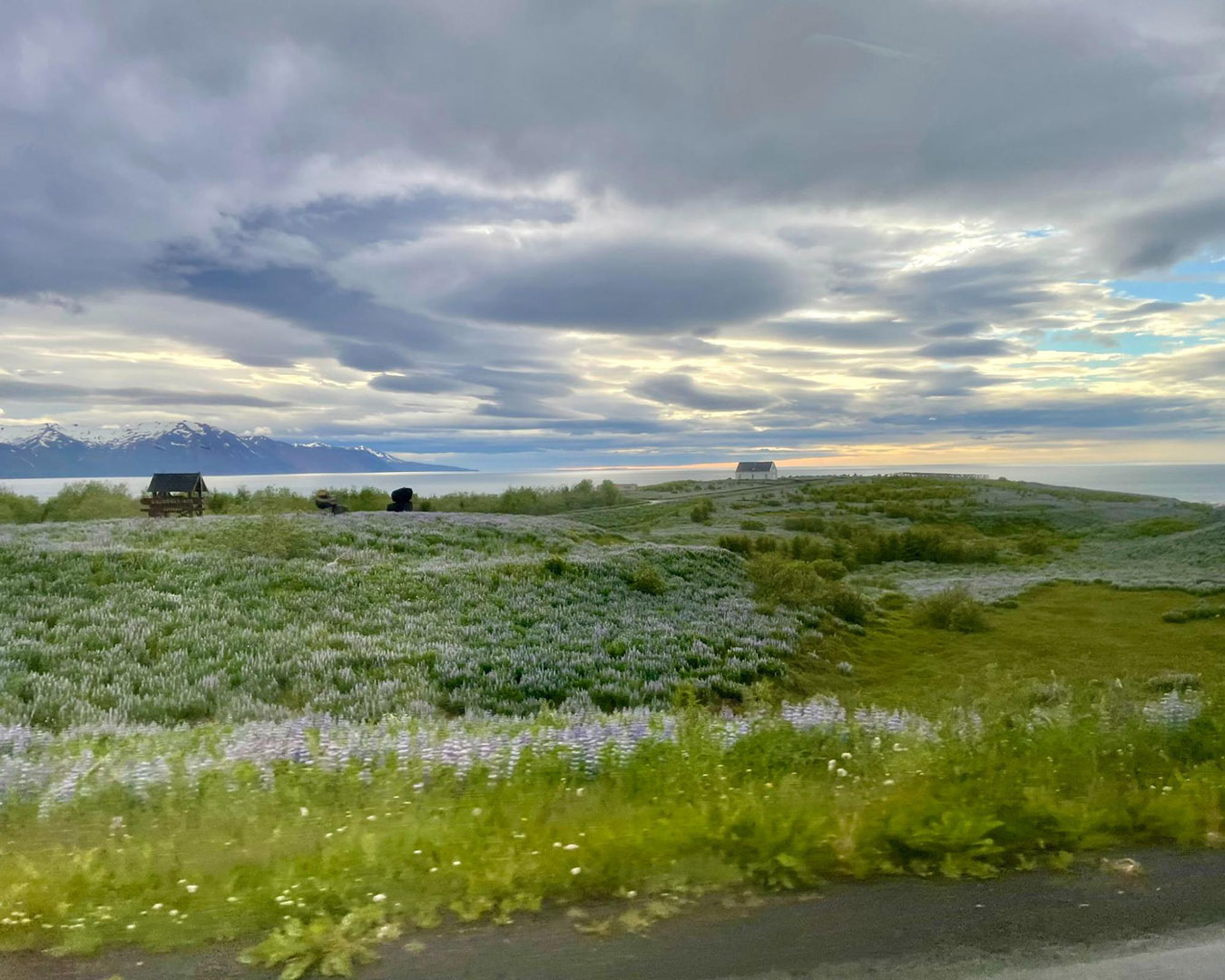
Around 8:00 PM, I finally arrived in Húsavík and headed straight to the campground. I caught the staff just as they were about to leave and managed to check in at the very last minute. At last, what had felt like an endlessly long day was coming to an end.
But around midnight, a group of young guys pulled up in a car and pitched their tent right in front of mine. They’d clearly been drinking, and one of them kept shouting the “F” word at the top of his lungs for every little thing. It was so loud I couldn’t sleep.
Sighing, I stepped out of my tent for a cigarette. I looked up—and there it was: the glowing sky of the midnight sun, stretched out above me.
It was the hour when evening should’ve become night, but the sky never turned dark. Instead, it shifted gently and silently in color: soft pink light blurred across the horizon, blending into orange, then blue, then pale purple—a slow, seamless gradient.
It was one of those sights I know I’ll never forget on this journey.
To the guy yelling the “F” word—thank you.
July 11 - My first hitch hike
Around 4:00 AM, the potty mouth crew was still going strong, and I’d barely gotten any sleep.
Today’s goal: make it to a town called Kópasker, about 100 km away. But public transportation would only take me as far as Húsavík—from here on out, I’d be on my own to reach the starting point at Iceland’s northernmost lighthouse.
Despite the lack of sleep, my steps felt surprisingly light. The entire route to Kópasker would be on roads. I don’t usually use trekking poles, but since this would be a long journey, I decided to go all in from the start to avoid injury. Also, in an effort to save energy, I resolved to try something I’d never done before: hitchhiking.
I walked 3 km. Then 5 km. Then 10 km…
Not a single car.
It hit me—when I took the bus from Akureyri to Húsavík the day before, we’d barely passed any vehicles. Was I really about to walk the entire 100 km to Kópasker on foot…?
Just as I was starting to feel defeated, I saw it: a car approaching from behind.
No way I was letting this chance slip by.
Suddenly, it felt like a battle had begun—a high-stakes duel of my very first hitchhike. But being a total rookie, I had no strategy, no experience, and zero clue what I was doing. The car was closing in fast—I had to make a move.
And then, out of nowhere, the intro to Yumi Arai’s “Message in Rouge” started playing in my head. Yes! The hitchhiking scene from Kiki’s Delivery Service!
I remembered how Ursula and Kiki did it: standing tall, chest out, full of confidence, grinning wide, arm extended straight to the side, thumb up.
I struck the pose—and unbelievably, the car stopped!
Was this… beginner’s luck? It felt as thrilling as hitting the jackpot the first time you play slots.
The window rolled down to reveal a broad-shouldered man, around my age or slightly older.
“I’m heading to Kópasker,” I said.
“Hop in!” he replied without hesitation.
I tossed my pack in the back seat and started to climb in when he added, “Sit up front.”
“Thank you so much,” I said, and he responded:
“I’m turning right at the next intersection. You’ll be going straight, so I’ll drop you off there—is that okay?”
I checked Google Maps—it was about 20 km away. On foot that would’ve taken me four hours. In the car, it was barely twenty minutes. I thanked him again with my clumsy English, and enjoyed the short, scenic ride.
We arrived before I knew it.
“Well, I’m going this way, and you’re going that way!” he said with a smile. I pulled my pack from the back seat, thanked him again, and we parted ways.
Even after the car started driving off, I kept waving and waving, overwhelmed with gratitude for this first successful hitchhike.
“Bye! Thank you sooo much! Wait… huh? …Wait—WHAT?!”
I looked at my hands.
No trekking poles.
I’d left them under the back seat.
“Wait! Hold up!”
I ran after the car, shouting—but it zoomed off, easily doing 100 km/h.
It grew smaller and smaller in the distance as I stood there, crushed.
“Losing my trekking poles on day one… this sucks…”
But then—I saw the car flick on its right turn signal, pulling into a building just up the road.
YES!! What a dramatic twist!
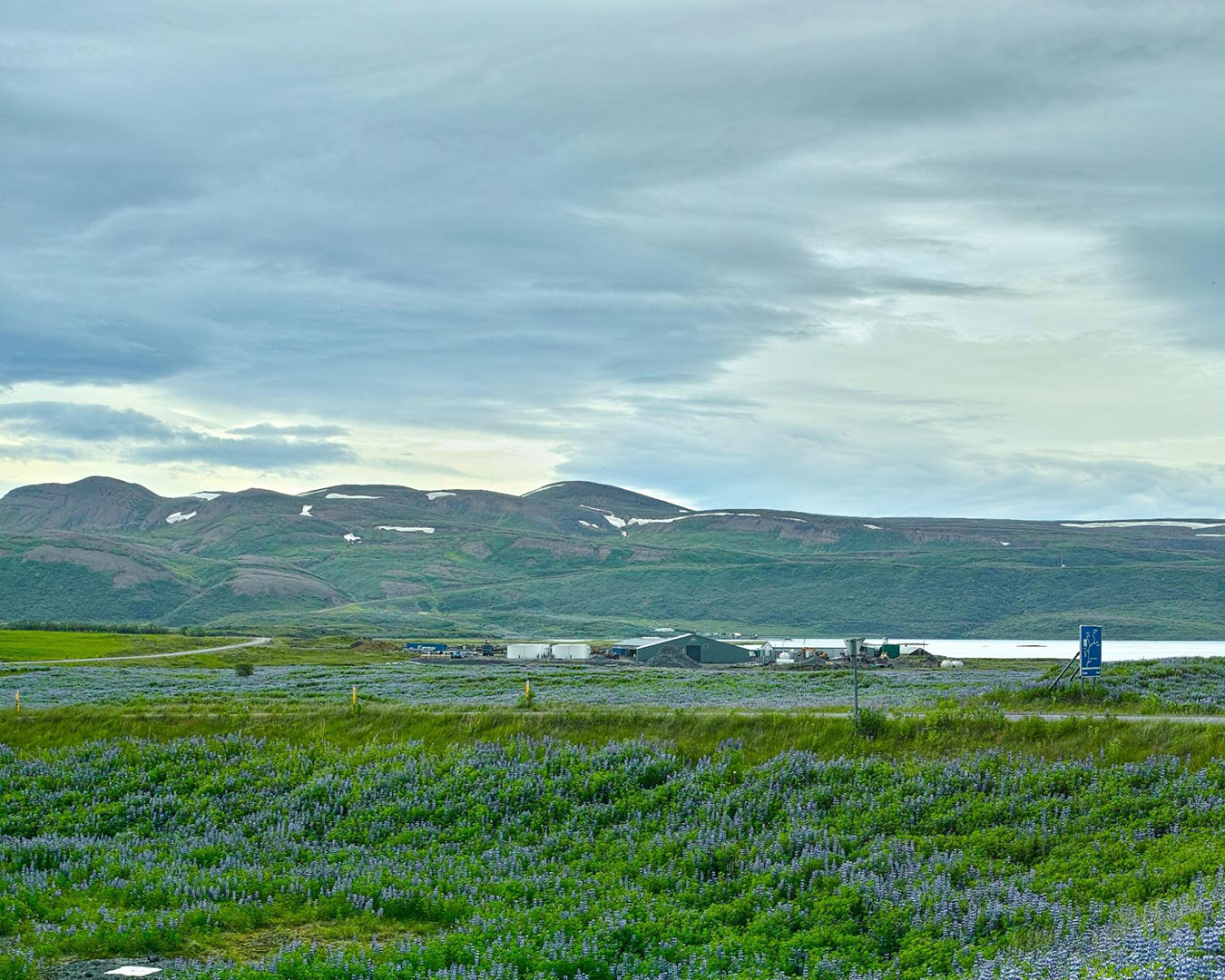
The factory where the hitchhiked car pulled in
It was only about a 1 km distance, but the driver could head out at any moment. My pack was ridiculously heavy—but I didn’t have time to worry about that. I took off in an all-out sprint.
When I arrived, I found a row of factory-like buildings, clustered together. I slipped onto the property, feeling like a total trespasser. But I told myself, This is a stealth mission to recover my trekking poles—and kept going.
Just then, two guys in work clothes stepped out of one of the buildings and spotted me immediately.
“What are you doing?”
Well… nothing left to lose. I threw together a desperate explanation with broken English and wild gestures:
“I forgot my trekking poles in a car I hitchhiked with!”
They looked at each other and said,
“Ah yeah, he was just talking about picking up a Japanese guy earlier.”
Then one added,
“His car’s over there. Door’s unlocked—go ahead and grab them.”
“Thank you! Sorry, I’m super forgetful!” I said, sweating bullets but relieved beyond words.
I found the car, opened the door, and there they were—my trekking poles. Mission accomplished. I convinced myself that this too was part of the beginner’s luck package, and started to feel better.
I returned to the road and was just about to rest when another car approached.
“Could this be a big chance?!”
Maybe Lady Luck was still with me.
I gave it another go—my best thumbs-up pose just like before…
And unbelievably, the car stopped again!
The window rolled down to reveal a slender man with a thin mustache.
I told him, “Kópasker,” and he replied just like the first driver:
“I’m going part of the way—hop in, I’ll take you as far as I can.”
That was more than enough for me.
I thanked him and got in.
This driver, it turned out, only spoke Icelandic. That’s when it hit me: Iceland, like Japan, is an island nation—and maybe out in the countryside, many people only speak their native language.
So instead of forcing conversation, I sat back and simply enjoyed the quiet ride through Iceland’s overwhelmingly vast landscape.
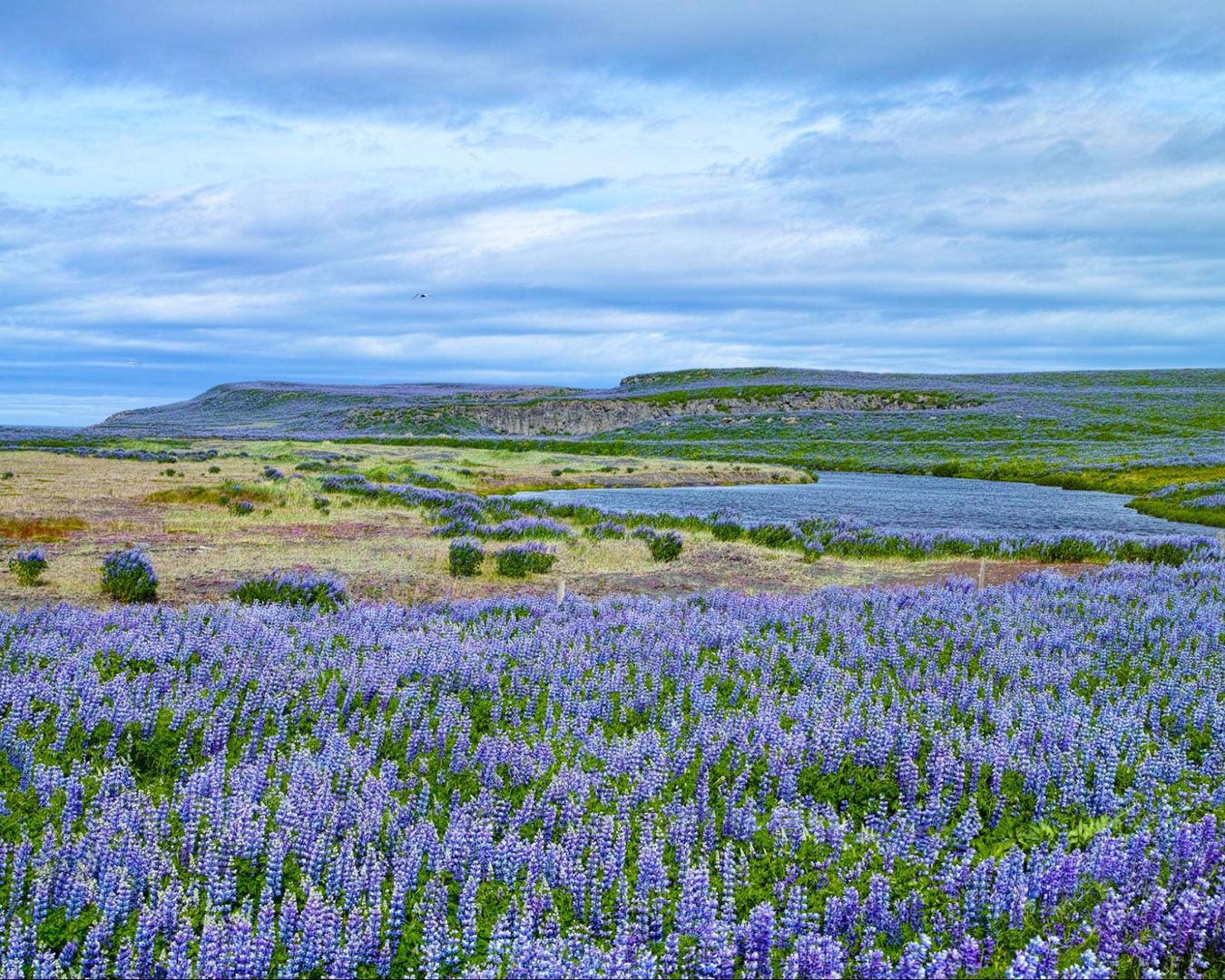
a wild lupine flower field
Around 8:00 AM, I was so captivated by the scenery I’d zoned out a bit, when I suddenly heard a quiet voice:
“We’re here.”
It was another factory.
Turns out both of the drivers who picked me up were on their morning commute. If I hadn’t started walking so early, I probably would’ve missed both of them. How lucky is that?
I had about 15 km left to Kópasker.
After going 2 for 2 on hitchhiking, I was honestly starting to worry I might be too lucky. If things kept going this smoothly, was I setting myself up for a big karmic slap later?
Just in case, I decided to walk the remaining distance on my own. A few camper vans and trucks passed me by, but I didn’t stick out my thumb. Even though I normally hate road walking, the incredible scenery made it surprisingly pleasant.
“You know what? Walking roads isn’t so bad,” I thought as I kept a steady pace.
With about 3 km to go, a car suddenly slowed down beside me. The window rolled down, and a middle-aged man with glasses leaned out.
“Are you headed to Kópasker? I can give you a ride.”
A reverse hitchhike! I decided to take it as a sign—a blessing from the goddess of luck herself.
“Really? Thank you, I’d love a ride!”
I gladly accepted and got in.
The man spoke about the same level of English as I did, and we communicated as best we could—sharing bits about my trip, about Iceland. He seemed genuinely excited to meet a Japanese traveler. When I mentioned that I was heading past Kópasker to the lighthouse, he lit up and said:
“My mother lives about 10 km past Kópasker, and I’m heading there now. I’ll take you that far.”
I’d originally been content to make Kópasker my goal for the day, but hearing that made me feel a huge sense of relief. That stretch to the lighthouse had felt like a big unknown, and I’d been quietly anxious about it. Now, not only was I making great progress—I started to think:
“Wait, could I actually make it to the lighthouse today?”
I hesitated, but asked,
“If it’s not too much trouble… could you maybe take me as far as you’re able to?”
The man looked slightly unsure, then said,
“Wait a second.”
He made a call using the car’s navigation system. It was probably his mother on the line. I couldn’t understand the Icelandic, but I could tell from his excited tone he was explaining the situation. Then he turned to me with a serious expression.
“I’m sorry… I need to be at my mother’s place by noon.”
I quickly apologized—“No worries, I’m sorry for asking too much.”
But then, he smiled and said:
“That’s why—until then, I’ll take you as far as I can.”
Whoa—what a heartwarming twist, part two!
I did my best to express just how grateful I was.
As we passed through his mother’s village, he pointed out,
“That’s where she lives.”
It was a peaceful, charming settlement that seemed perfectly blended into the surrounding nature. Beyond that point, the paved road ended, and we transitioned onto gravel—a long, straight stretch of nothingness.
The man grew quieter as we drove on. I could sense that we were nearing our goodbye.
Eventually, the car slowed to a stop.
“This is where we part ways.”
I stepped out, and to my surprise, he got out too.
We hugged, smiling, and I thanked him over and over.
To the kind man with glasses—thank you, truly.
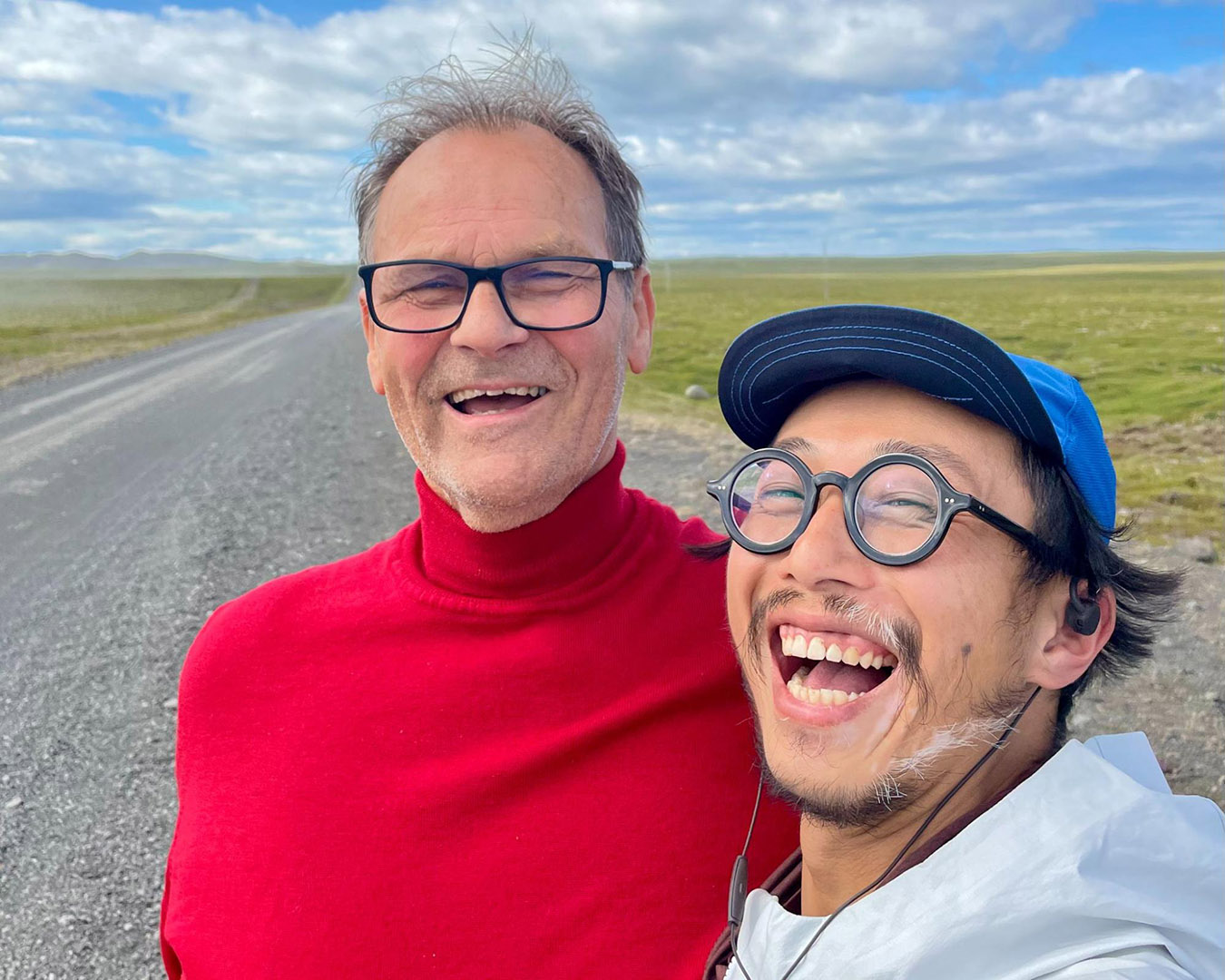
Across the sea, I could see Greenland. The wind was strong—and cold.
From Húsavík, where I’d started walking this morning, it was about 150 km to the northernmost lighthouse, my official starting point. And now, only 25 km remained.
It was just 11:30 AM. If I walked for another five hours, I could get there today.
So I decided to walk.
By this point, I had already walked around 25 km, not counting the hitchhiked sections, and my pace was starting to slow. Still, the scenery all around me was breathtaking.
Before long, I entered a birdwatching zone, filled with migrating birds.
The landscape felt like something straight out of Future Boy Conan—just like Remnant Island.
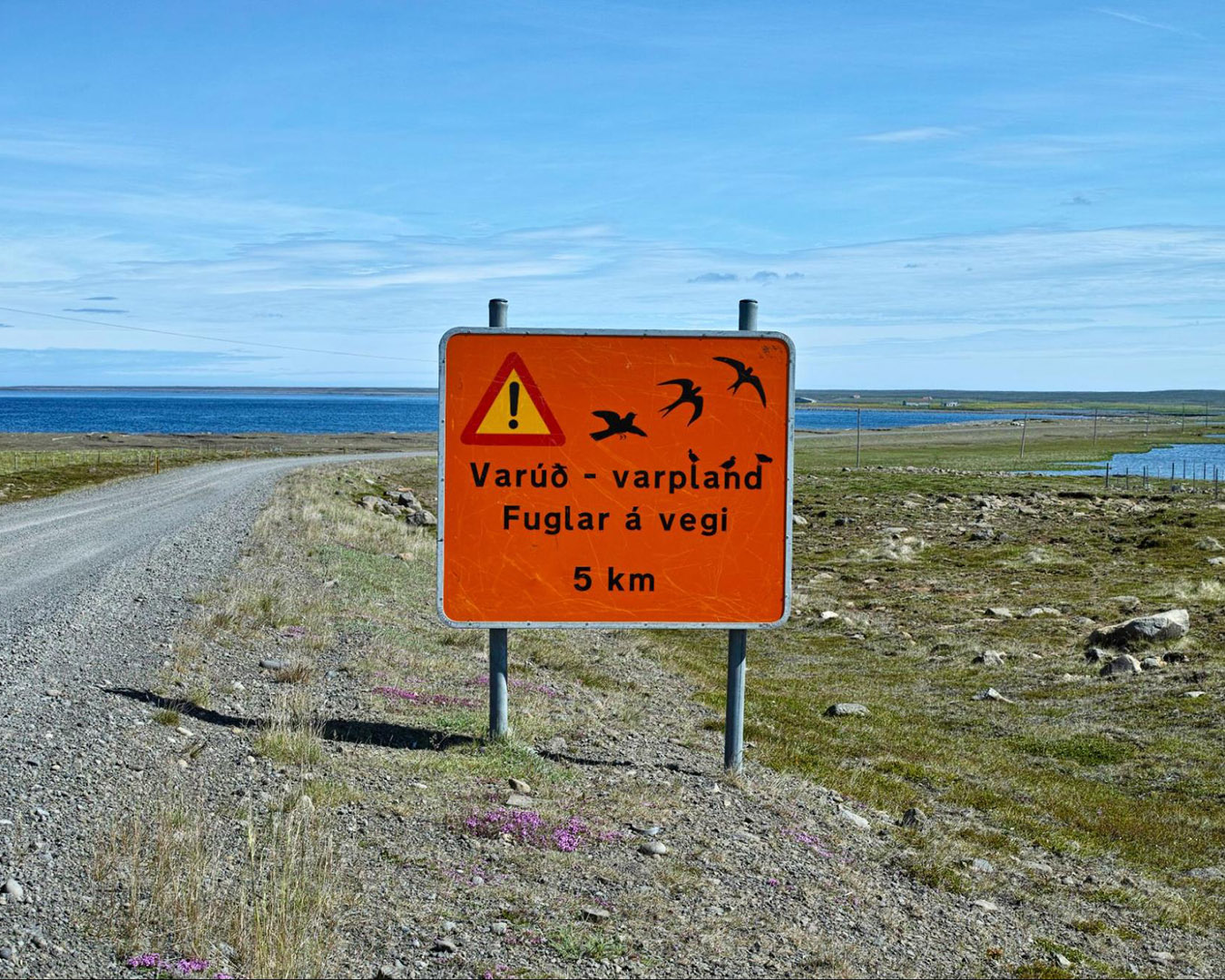
“For the next 5 km, birds may appear on the road due to nesting areas.”
With about 10 km to go, I finally caught sight of something I’d been both dreading and longing to see—the starting point of my journey.
Far off in the distance, no bigger than a grain of rice, I could just make out the northernmost lighthouse, Hraunhafnartangi.
The moment it came into view, a wave of nervous tension washed over me.
No one understands how tough this journey will be more than I do—after all, I’m the one who planned it.
And now, that start line I’d been mentally preparing for is right there, almost within reach.
My mind began to spiral, flooded with thoughts of what lay ahead. I couldn’t focus on walking anymore, and my pace slowed to a crawl.
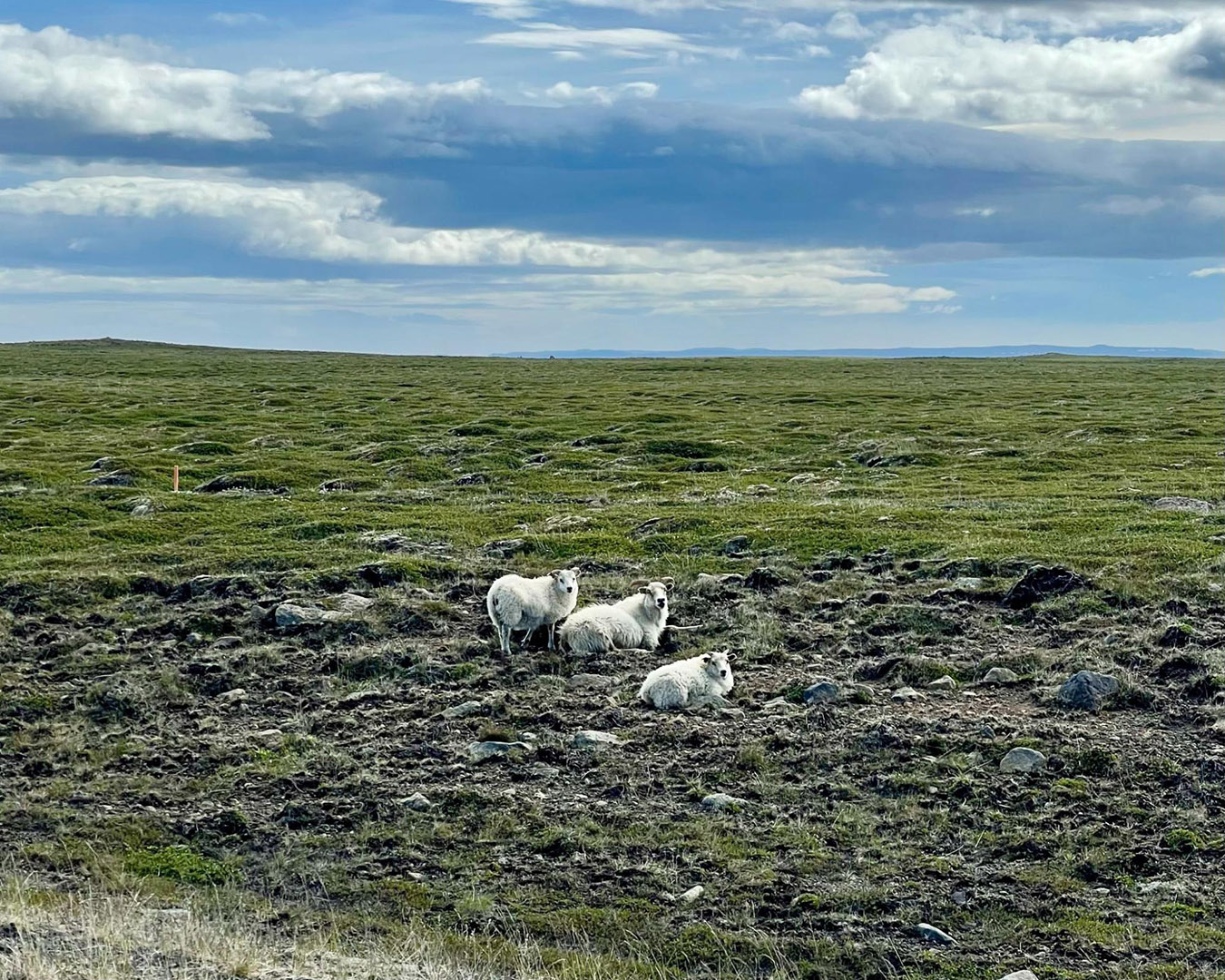
Sheep everywhere you look
Just then, two cars approached from behind.
“Where are you headed?” someone asked.
I pointed toward the lighthouse and said, “Over there.”
Before I could even ask for a ride, one of the guys in the backseat hopped out, opened the hatchback, and started rearranging bags to make space for my backpack.
They must have seen me from behind—probably walking like I was completely exhausted.
The car was already packed tight, but no one seemed bothered at all. They welcomed me in with smiles and without hesitation.
There were only about 3 km left to the lighthouse, but with the days ahead in mind, I was grateful for any chance to save energy.
Before I knew it, we arrived at the turnoff leading to the lighthouse.
I thanked them, bowed several times, and watched as they drove off.
Just a little further now—almost there.
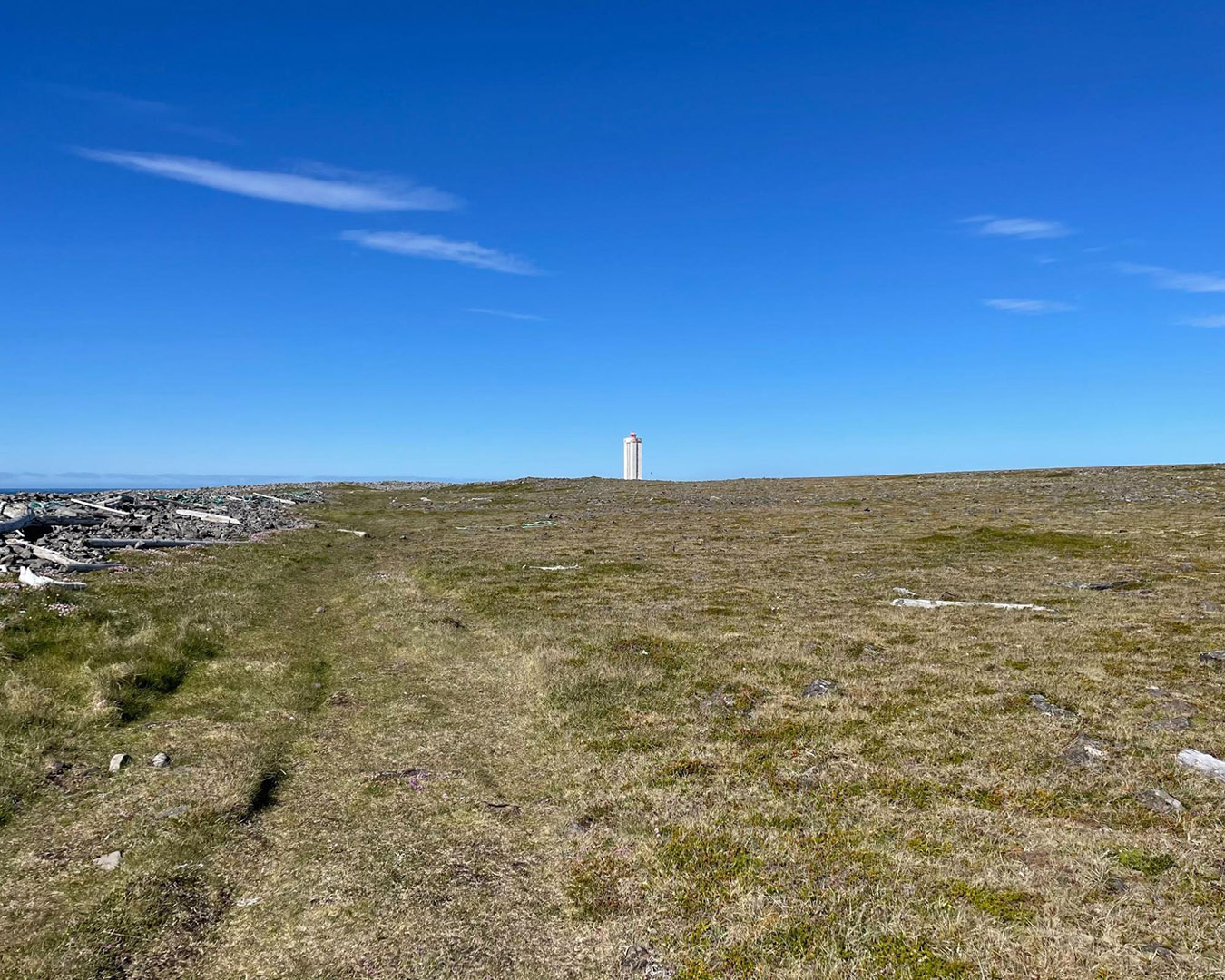
The northernmost lighthouse of iceland – the starting point
In just this one day, I was helped by so many people.
I was so overwhelmed with gratitude and joy, I couldn’t hold back the tears—they filled my eyes until I could barely see the road ahead.
As if sensing my emotions, a migratory bird began walking in front of me, almost like it had come to guide me the rest of the way.
And then—whether to say finally or at last—
I arrived at Hraunhafnartangi Lighthouse, the starting point of this 600 km journey.

Campsite on the night before the journey began
Tonight, I’ll camp here.
Tomorrow, I offically start my UL Hiking Reseach Program.
Even at 8:00 PM, it’s still bright outside. I’ll try to get some rest early and recover, preparing myself for the upcoming 600 km journey, with no resupply.
What kind of trails will I walk? What kind of landscapes await me?
As those thoughts swirled in my mind, I drifted off to sleep without even realizing it.
[To be continued in #2]
Gear list
Base weight: 4.36kg
Total pack weight excluding water, food, and fuel

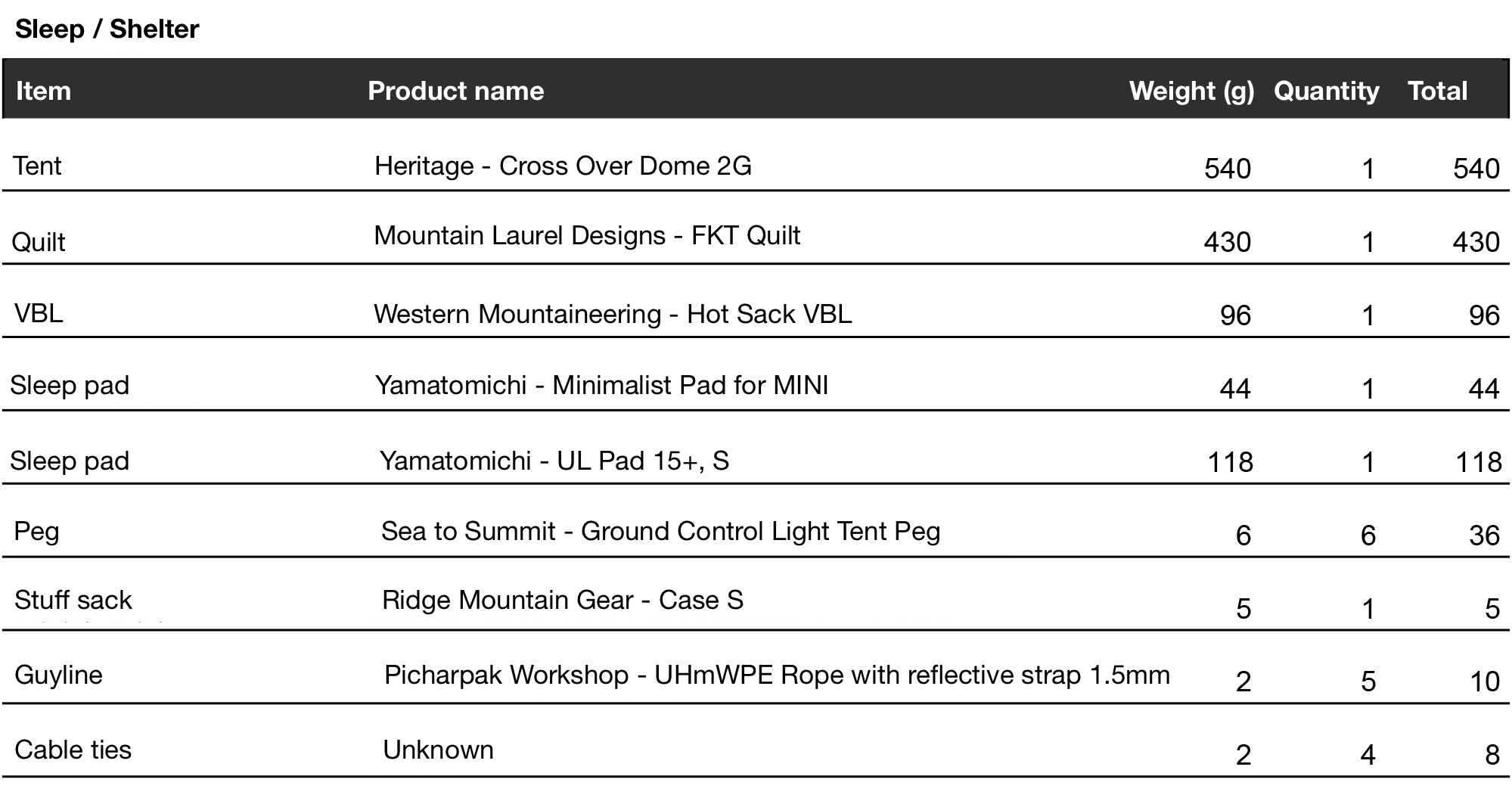
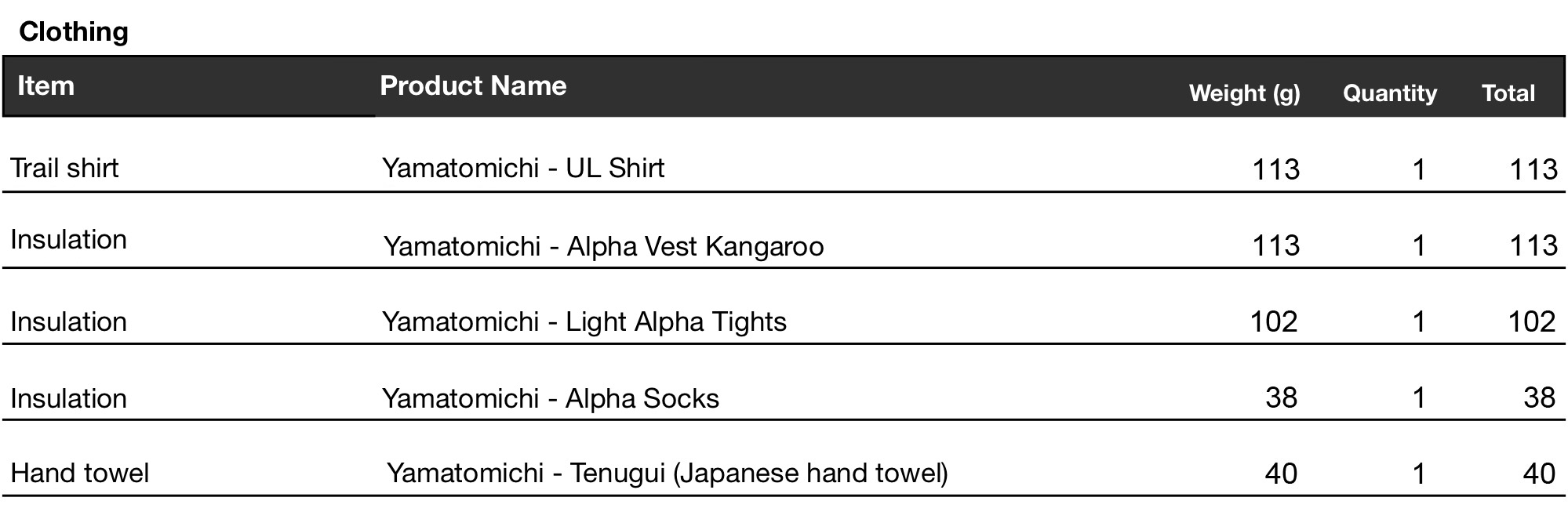
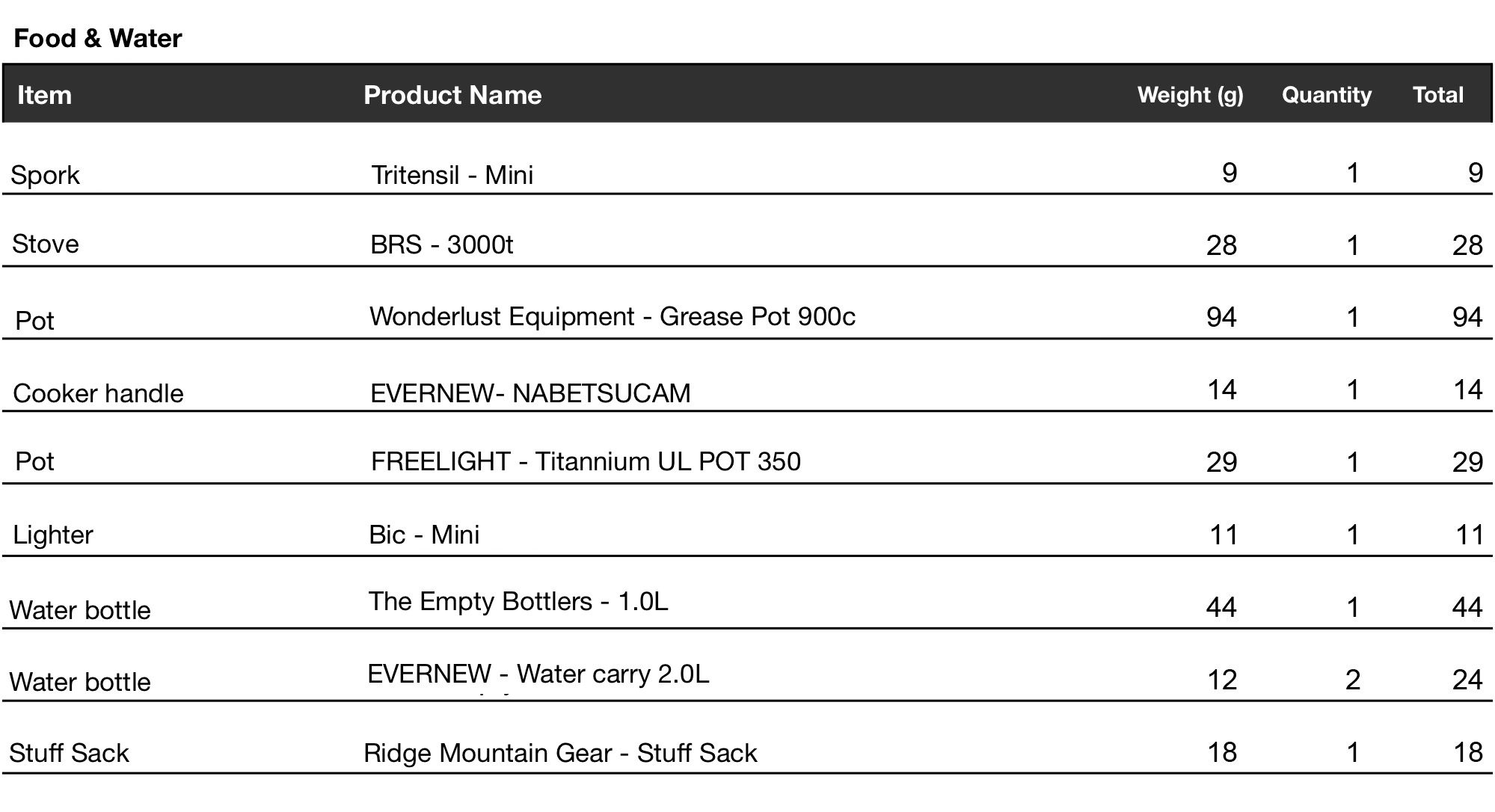


YouTube
Sonoda and staff member JK also looked back on the journey in a YouTube video.
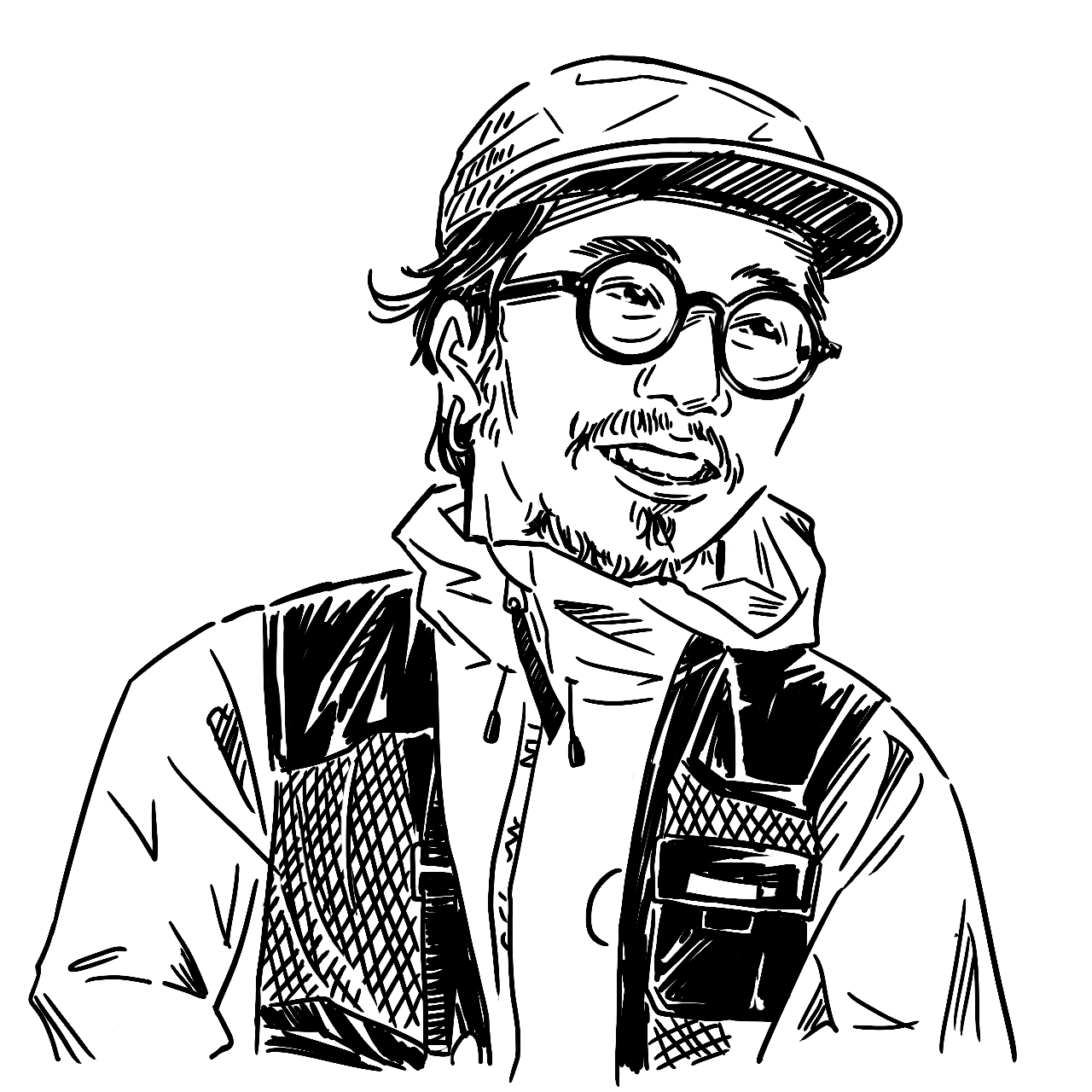
Yamatomichi Kamakura Staff
Originally from Osaka, Oji relocated to Kamakura in 2017. After working as a book planner and editor at an art-related publishing company he went freelance and now also works at our Yamatomichi Zaimokuza shop while running his own book business. He is also a keen gardener and hunter!







